Langley Research Center: 100 Years of Exploring Flight
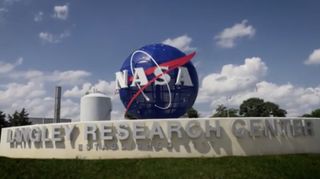
Decades before NASA existed, Langley Research Center studied the challenges of flight, a mission that prepared the United States for the space race and modern astronaut exploration. Researchers at the center helped design a plane to break the sound barrier, plotted how to put humans in orbit and then stay in contact, hunted where the first lunar astronauts should take their first steps on the moon, and then trained those astronauts in simulated gravity. The center went on to help develop the space shuttle, built and maintained satellites to study Earth, and is currently working on the Space Launch System, an advanced vehicle that will one day allow humans to travel into deep space.
The Langley research lab is located in Hampton, Virginia, only a few miles from Virginia Beach. Its Air & Space Center serves as the official visitors center, and contains a wealth of aircraft and spacecraft exhibits.
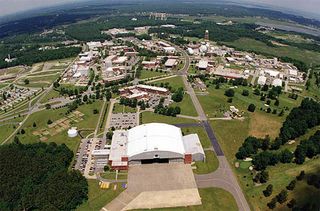

Solving the fundamentals of flight
Langley Memorial Aeronautical Laboratory started in 1917, months after the United States entered World War I. The center's original focus was on airplane technology, with a goal "to solve the fundamentals of flight," according to Langley staffer Jim Schulz in an article about the center's history. The agency made groundbreaking aeronautical advances, including better propellers and new kinds of rotorcraft and helicopters.
During World War II, planes like the P-51 Mustang were tested in the United States' first wind tunnel built for full-sized aircraft. The research helped engineers to reduce fuel use and increase wind speeds, a combination that "helped win the war," Schulz wrote.
But wartime wasn't the only time Langley worked on planes. The center helped to design the Bell X-1, an experimental aircraft that then-Air Force Captain Chuck Yeager would use to break the speed of sound. Langley would continue researching hypersonic aircraft, helping to design the X-15 that flew five times faster than the speed of sound by 1959.
"Data gathered during the X-15 flights would directly contribute to the creation of the U.S. space program," Schulz wrote.
From Earth to space
Only days after NASA was founded, the Space Task Group (STG) was established to help get humans into space. Many members of STG were drawn from Langley's ranks, where the unit would work as a field unit.
"Though Langley lacked management control over the new group, the center's support of the task group's ambitious program proved remarkably strong," James R. Hansen said in his book, " Spaceflight Revolution ," part of a NASA history series.
STG helped to sift through a number of proposed capsules not only to determine which design would be the most effective but also which would be the fastest to launch into space. Leader Robert Gilruth also had to deal with politicians, not all of whom were excited about the program. Hansen wrote:
Some of these gentlemen were not at all enthusiastic about our plan to put a man into space," Gilruth later acknowledged. In fact, Presidential Science Adviser Dr. George Kistiakowsky had remarked with great displeasure that the plan "would be only the most expensive funeral man has ever had.
Nonetheless, the STG engineers launched test rockets with dummy payloads that fell back into the nearby Atlantic Ocean, checked and rechecked Mercury escape rocket and recovery systems, sent two Rhesus monkeys into space to better understand the risk to astronauts, and helped to develop the heat shield that would protect the space travelers when they re-entered Earth's atmosphere.
Gilruth later said that Project Mercury "wasn't pretty like a flower or a tree. But it had no bad traits. It was designed as a vehicle for a man to ride in, and circle the earth. With its blunt body, its retrorockets and parachutes, it was an elegant solution to the problem."
Because NASA flight operations officers and engineers wanted to maintain nearly constant radio contact with the astronauts, NASA engineers at Langley had to create a worldwide tracking network. NASA's history reveals that the original goal of mission control was to maintain a passive mode of flight control, letting the astronauts and the automatic in-flight systems do the rest. Eventually the team decided that crucial decisions should be made by a group of people on the ground. By 1959, STG was pressing to have one built at Cape Canaveral, where the rockets would launch. Hansen wrote:
The physicians were "horrified at the casualness" of one suggestion that in-flight communications with the astronauts could be handled like commercial air traffic control, with the pilot only reporting to the ground every 15 to 30 minutes. The doctors, intent on continuous and complete monitoring of the astronaut's vital physiological and mental responses to the unknown demands of spaceflight, did not like the idea of gaps in communication lasting for any appreciable length of time .
Ultimately, STG opted to set up a tracking network with no gaps larger than 10 minutes.
In a time when instantaneous phone calls were not yet possible, NASA needed to build up a global system. With STG already swamped with their duties, Gilruth asked if Langley could take on the additional responsibility. The agency stepped up to the challenge, overseeing the creation of an ambitious network made up of 18 relay stations across three continents, seven islands, and two ocean-bound ships.
On May 5, 1961, Alan Shepard became the first American to fly a Mercury capsule, Freedom 7, into space. On the third Mercury mission, aboard Friendship 7, John Glenn became the first American to orbit the Earth.
While the astronauts took center stage, Langley's human "computers" performed backup calculations to keep them safe. Originally hired during World War II to make calculations about airplane safety and rocket-launch experiments, the computers were mostly women, and included minorities.
One of those, Katherine Johnson, took center stage in the book and subsequent movie " Hidden Figures ," which tells the story of these human computers. But although they remained unknown to most people, the astronauts were well aware of their contribution. [ Related: NASA Examines Key Role of ‘Hidden Figures’ Amid Langley Center Celebration ]
As a part of the preflight checklist, Glenn asked engineers to "get the girl" — Johnson — to run the same numbers through the same equations that had been programmed into the computer, but by hand, on her desktop mechanical calculating machine.
"If she says they're good," Johnson remembers Glenn saying , "then I'm ready to go."
To the moon …
In 1962, STG moved to the newly built Johnson Space Center in Houston, Texas. But this didn't mark the end of Langley's role in space exploration. The center continued to play a role in the trip to the moon, from the lunar capsule to touching down to astronaut training.
Familiar with aircraft, Langley helped to design and manage the Lunar Orbiter project, which photographed almost the entire surface of the moon. These photographs helped determine where Neil Armstrong and his crew would eventually take their first lunar steps for humanity. Langley was also home to aerospace engineer John Houbolt, who contributed to the design of smaller, simpler lunar modules for the landing crew. Langley also housed the Rendezvous Docking Simulator, where astronauts practiced the procedures necessary for a lunar landing.
While astronauts today spend most of their training time at Johnson, the first potential lunar astronauts spent their time at Langley. The Reduced Gravity Simulator was a vehicle suspended by a network of cables to an overhead track. Here, astronauts would test their ability to walk, run, and perform various tasks under reduced gravity.
According to NASA, "Armstrong offered what was perhaps the greatest tribute to the importance of his Langley training in Apollo 11's success. When asked what it was like to land on the moon, he replied, 'Like Langley.'"

… and beyond!
Langley continued its groundbreaking work long after Armstrong and his crew completed their first journey. Langley evaluated designs for the space shuttle that served as NASA's main human transportation system for more than three decades. The center also improved materials and tested landing systems crucial to all 135 shuttle missions.
Langley engineers created, built, and managed a series of aircraft on board planes and spacecraft to study the planet's changing climate. The lab led the first successful mission to Mars with the 1976 touchdown of Viking 1. Advanced sensors in the heat shield of the 2012 Mars Curiosity Rover came from Langley's labs.
Today, Langley is hard at work on the next generation of rockets, the Space Launch System . The SLS is a powerful rocket designed to reduce the amount of time it takes to travel through space, reducing trip times to the outer part of the solar system. Carried into space by the SLS, the Orion spacecraft will be capable of carrying four astronauts out of Earth's atmosphere, to the moon, Mars or elsewhere. The first test is planned for 2019.
Additional resources
- Spaceflight Revolution: NASA Langley Research Center from Sputnik to Apollo
- #NASALangley 100: A 10-part series commemorating NASA's past, present, and future
- William Shatner Narrates History of NASA's 100-Year-Old Langley Research Center (Video)
Follow Nola Taylor Redd at @NolaTRedd , Facebook , or Google+ . Follow us at @Spacedotcom , Facebook or Google+ .
Join our Space Forums to keep talking space on the latest missions, night sky and more! And if you have a news tip, correction or comment, let us know at: [email protected].
Get the Space.com Newsletter
Breaking space news, the latest updates on rocket launches, skywatching events and more!

Nola Taylor Tillman is a contributing writer for Space.com. She loves all things space and astronomy-related, and enjoys the opportunity to learn more. She has a Bachelor’s degree in English and Astrophysics from Agnes Scott college and served as an intern at Sky & Telescope magazine. In her free time, she homeschools her four children. Follow her on Twitter at @NolaTRedd
Watch live as Russian Soyuz spacecraft carrying 3 spaceflyers departs the ISS tonight
SpaceX launching 21 Starlink satellites from California on April 6
Southern Illinois will get its 2nd solar eclipse in a decade this year
Most Popular
By Tantse Walter February 06, 2024
By Fran Ruiz January 29, 2024
By Fran Ruiz January 26, 2024
By Conor Feehly January 05, 2024
By Keith Cooper December 22, 2023
By Fran Ruiz December 20, 2023
By Fran Ruiz December 19, 2023
By Fran Ruiz December 18, 2023
By Tantse Walter December 18, 2023
By Robert Lea December 05, 2023
By Robert Lea December 04, 2023
- 2 This hellish exoplanet's skies rain iron and create a rainbow-like effect
- 3 This solar eclipse simulator on SkySafari will guide you through the eclipse on April 8
- 4 Total solar eclipse 2024: Live updates
- 5 Peer inside remnants of an 800-year-old supernova and see a 'zombie' star

Suggested Searches
- Climate Change
- Expedition 64
- Mars perseverance
- SpaceX Crew-2
- International Space Station
- View All Topics A-Z
Humans in Space
Earth & climate, the solar system, the universe, aeronautics, learning resources, news & events.
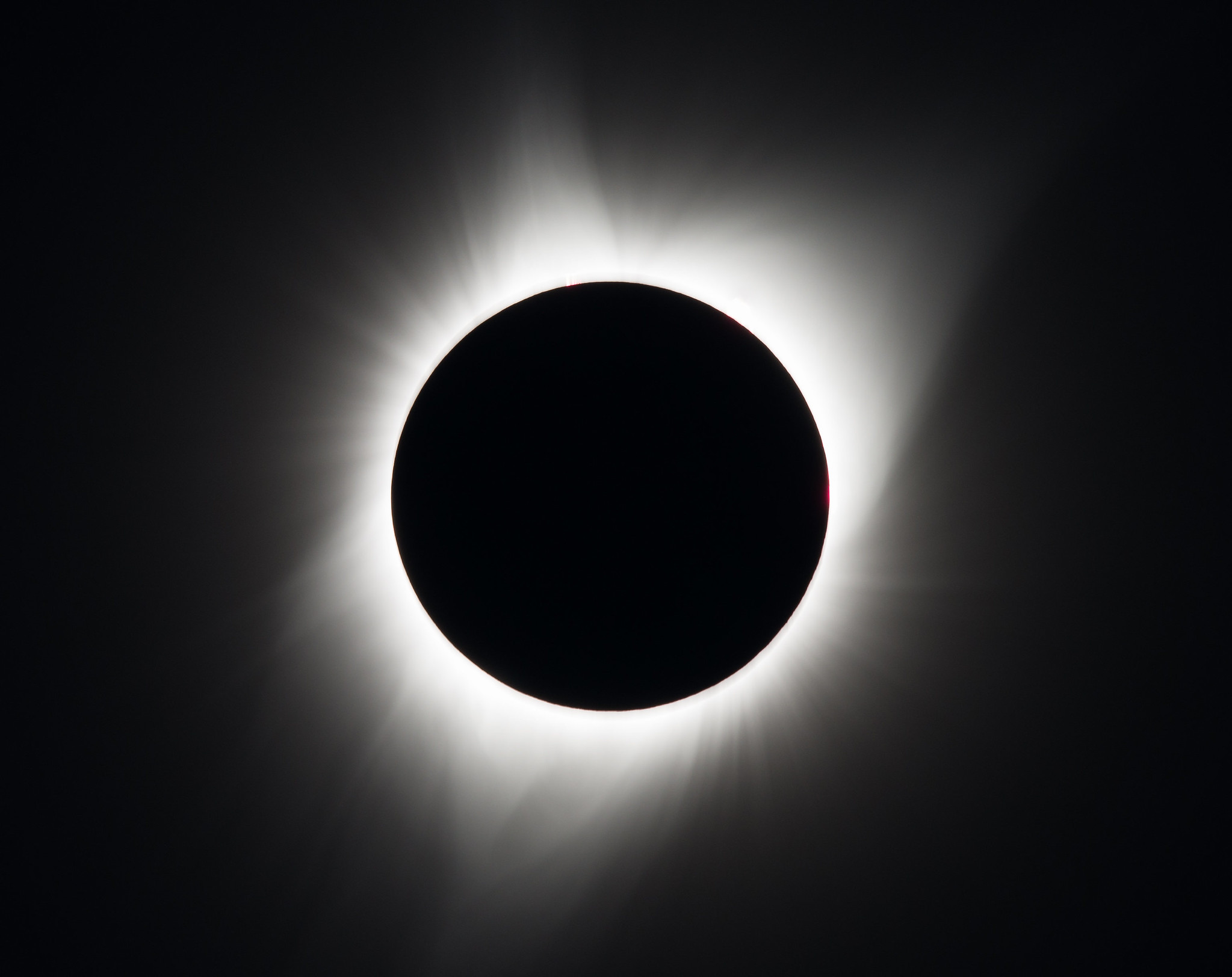
2024 Total Solar Eclipse Broadcast
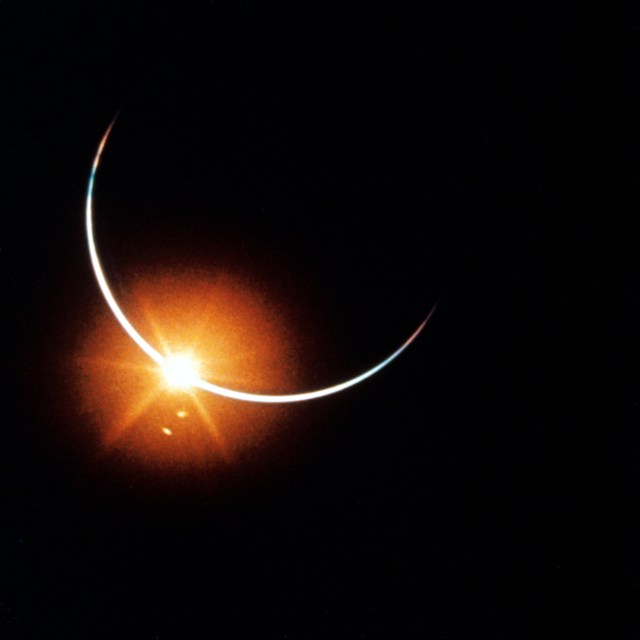
Eclipses Near and Far
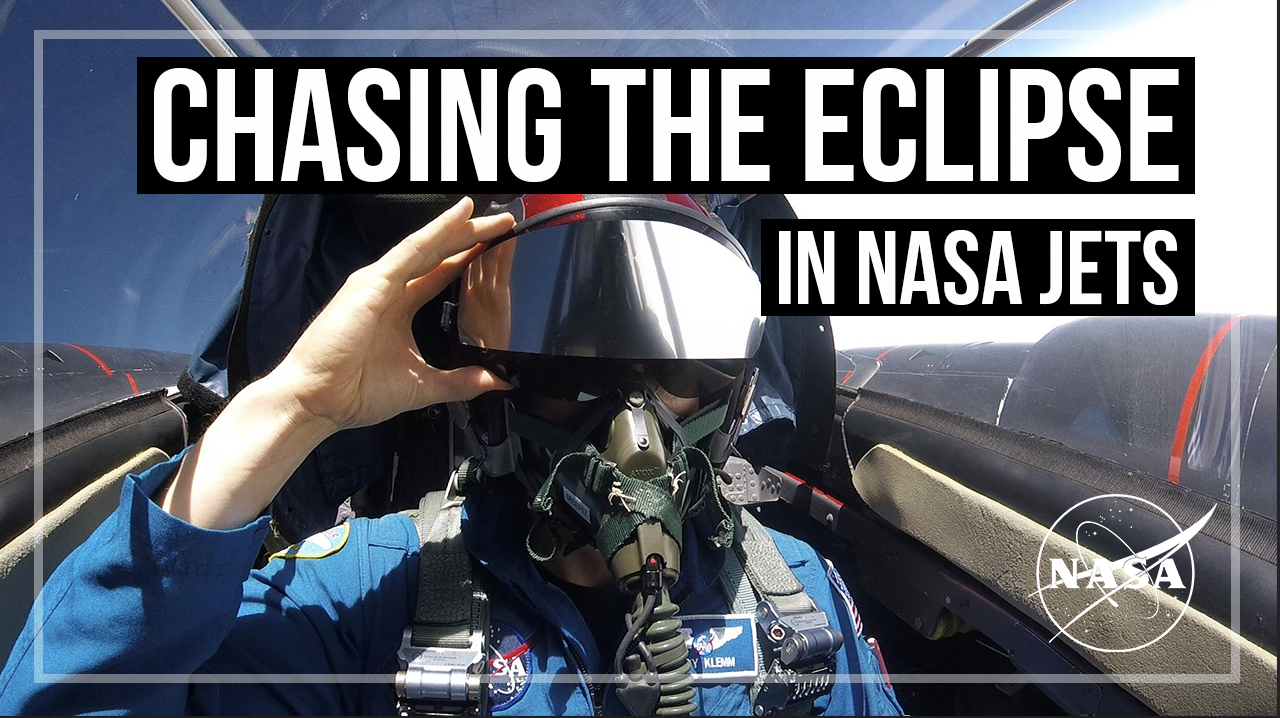
Scientists Pursue the Total Solar Eclipse with NASA Jet Planes
- Search All NASA Missions
- A to Z List of Missions
- Upcoming Launches and Landings
- Spaceships and Rockets
- Communicating with Missions
- James Webb Space Telescope
- Hubble Space Telescope
- Why Go to Space
- Astronauts Home
- Commercial Space
- Destinations
- Living in Space
- Explore Earth Science
- Earth, Our Planet
- Earth Science in Action
- Earth Multimedia
- Earth Science Researchers
- Pluto & Dwarf Planets
- Asteroids, Comets & Meteors
- The Kuiper Belt
- The Oort Cloud
- Skywatching
- The Search for Life in the Universe
- Black Holes
- The Big Bang
- Dark Energy & Dark Matter
- Earth Science
- Planetary Science
- Astrophysics & Space Science
- The Sun & Heliophysics
- Biological & Physical Sciences
- Lunar Science
- Citizen Science
- Astromaterials
- Aeronautics Research
- Human Space Travel Research
- Science in the Air
- NASA Aircraft
- Flight Innovation
- Supersonic Flight
- Air Traffic Solutions
- Green Aviation Tech
- Drones & You
- Technology Transfer & Spinoffs
- Space Travel Technology
- Technology Living in Space
- Manufacturing and Materials
- Science Instruments
- For Kids and Students
- For Educators
- For Colleges and Universities
- For Professionals
- Science for Everyone
- Requests for Exhibits, Artifacts, or Speakers
- STEM Engagement at NASA
- NASA's Impacts
- Centers and Facilities
- Directorates
- Organizations
- People of NASA
- Internships
- Our History
- Doing Business with NASA
- Get Involved
- Aeronáutica
- Ciencias Terrestres
- Sistema Solar
- All NASA News
- Video Series on NASA+
- Newsletters
- Social Media
- Media Resources
- Upcoming Launches & Landings
- Virtual Events
- Sounds and Ringtones
- Interactives
- STEM Multimedia
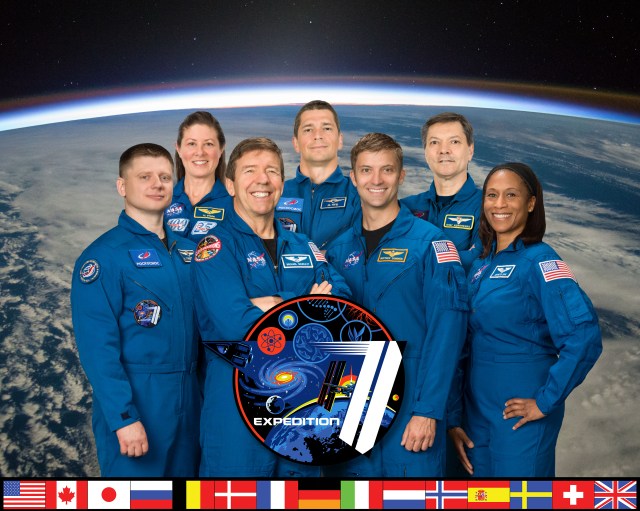
Expedition 71
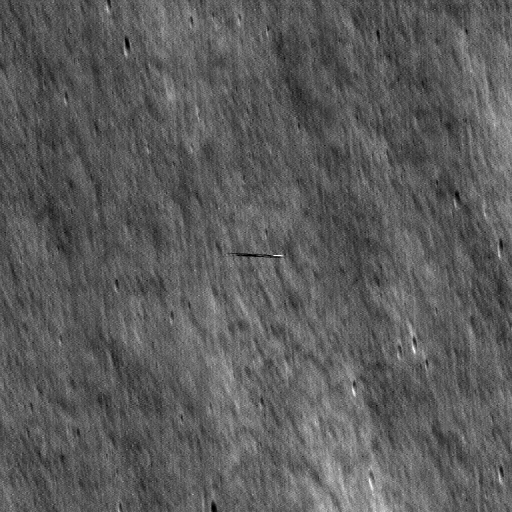
NASA’s LRO Finds Photo Op as It Zips Past SKorea’s Danuri Moon Orbiter
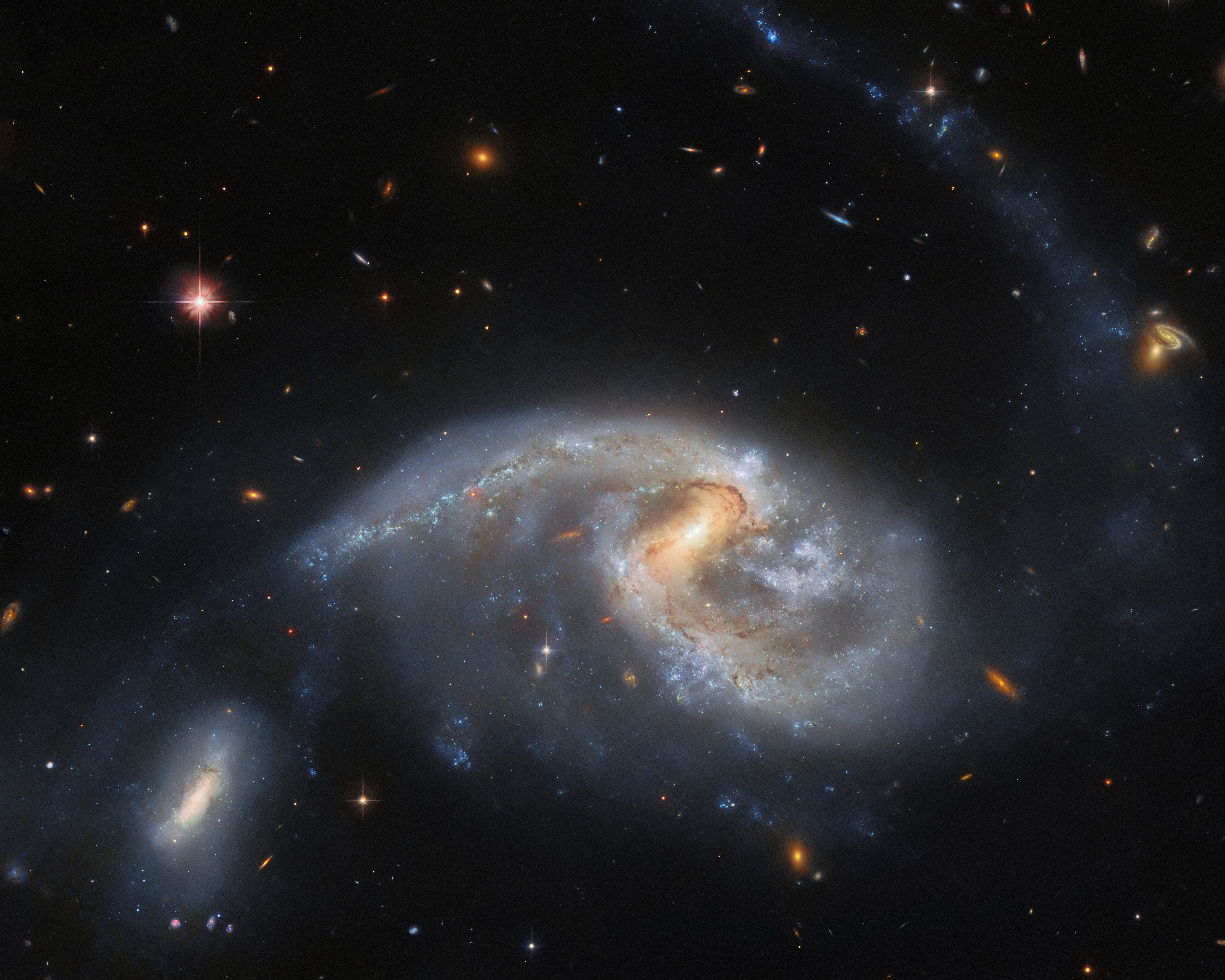
Hubble Peers at Pair of Closely Interacting Galaxies

NASA Astronaut Loral O’Hara, Expedition 70 Science Highlights

Diez maneras en que los estudiantes pueden prepararse para ser astronautas

Optical Fiber Production

How NASA Spotted El Niño Changing the Saltiness of Coastal Waters

Earth Day Toolkit
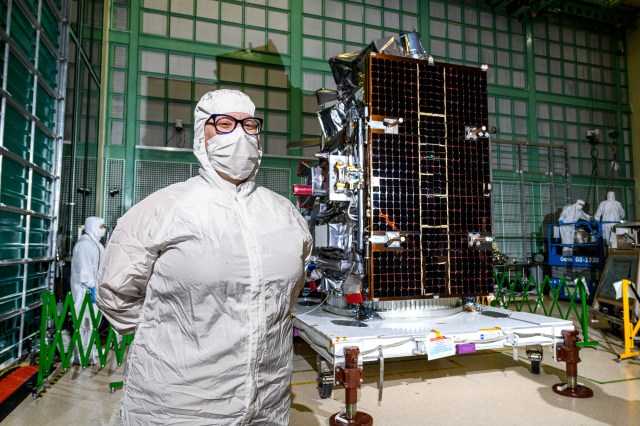
Veronica T. Pinnick Put NASA’s PACE Mission through Its Paces
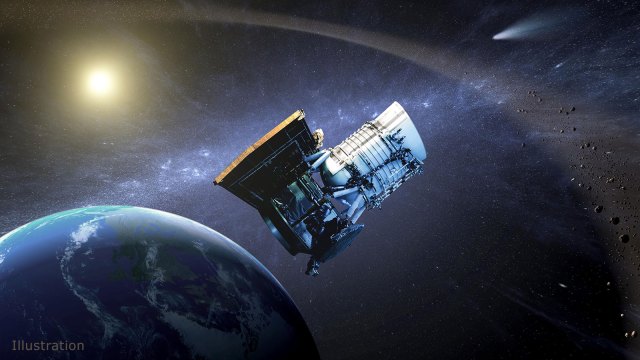
NASA’s NEOWISE Extends Legacy With Decade of Near-Earth Object Data
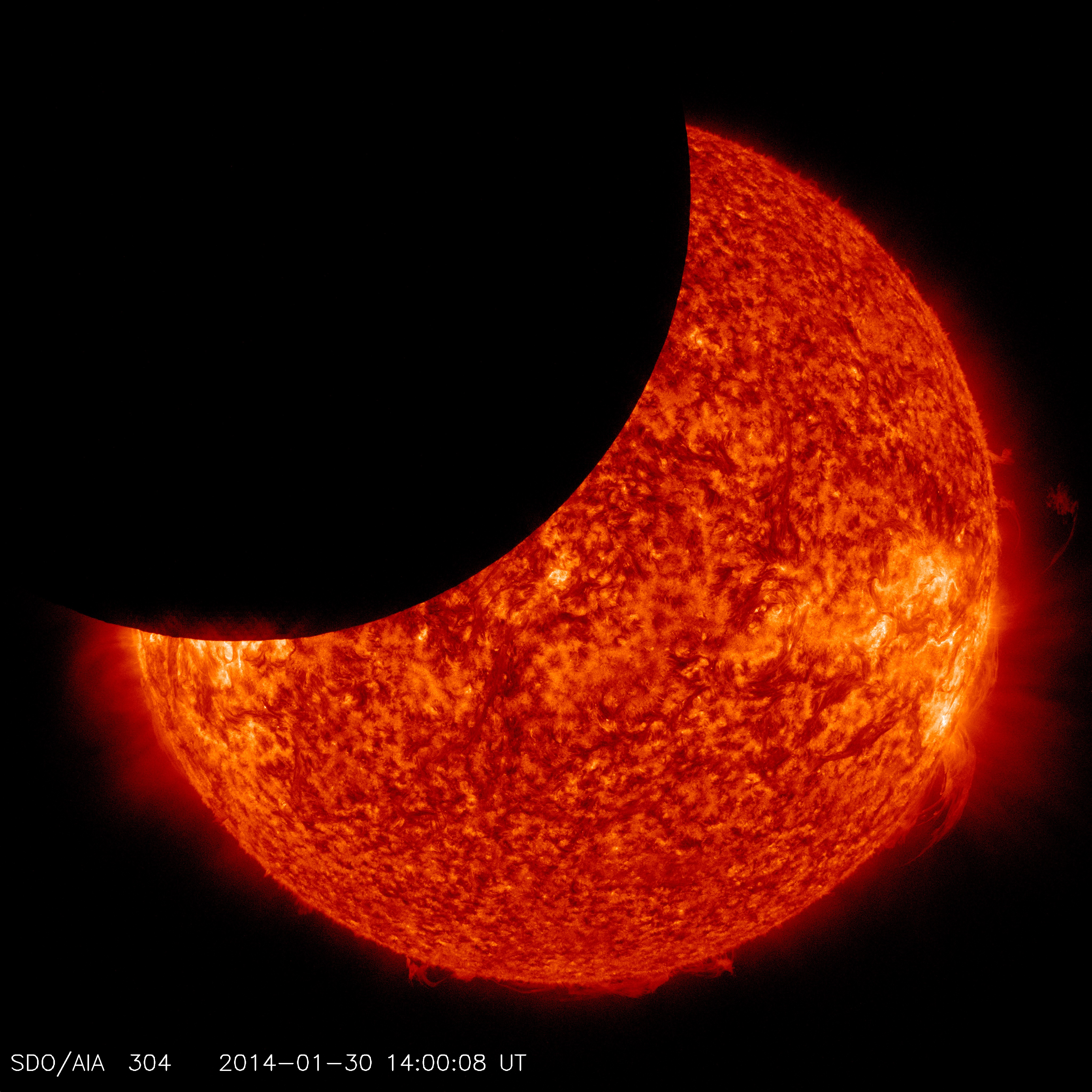
Harnessing the 2024 Eclipse for Ionospheric Discovery with HamSCI
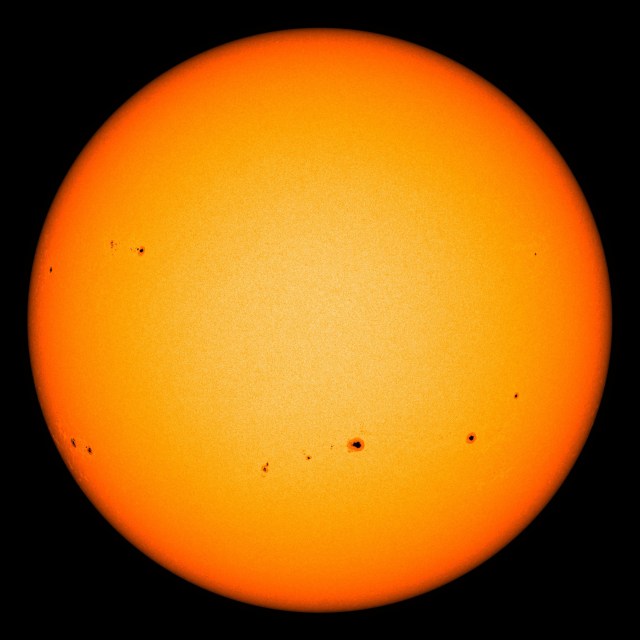
How NASA’s Roman Telescope Will Measure Ages of Stars
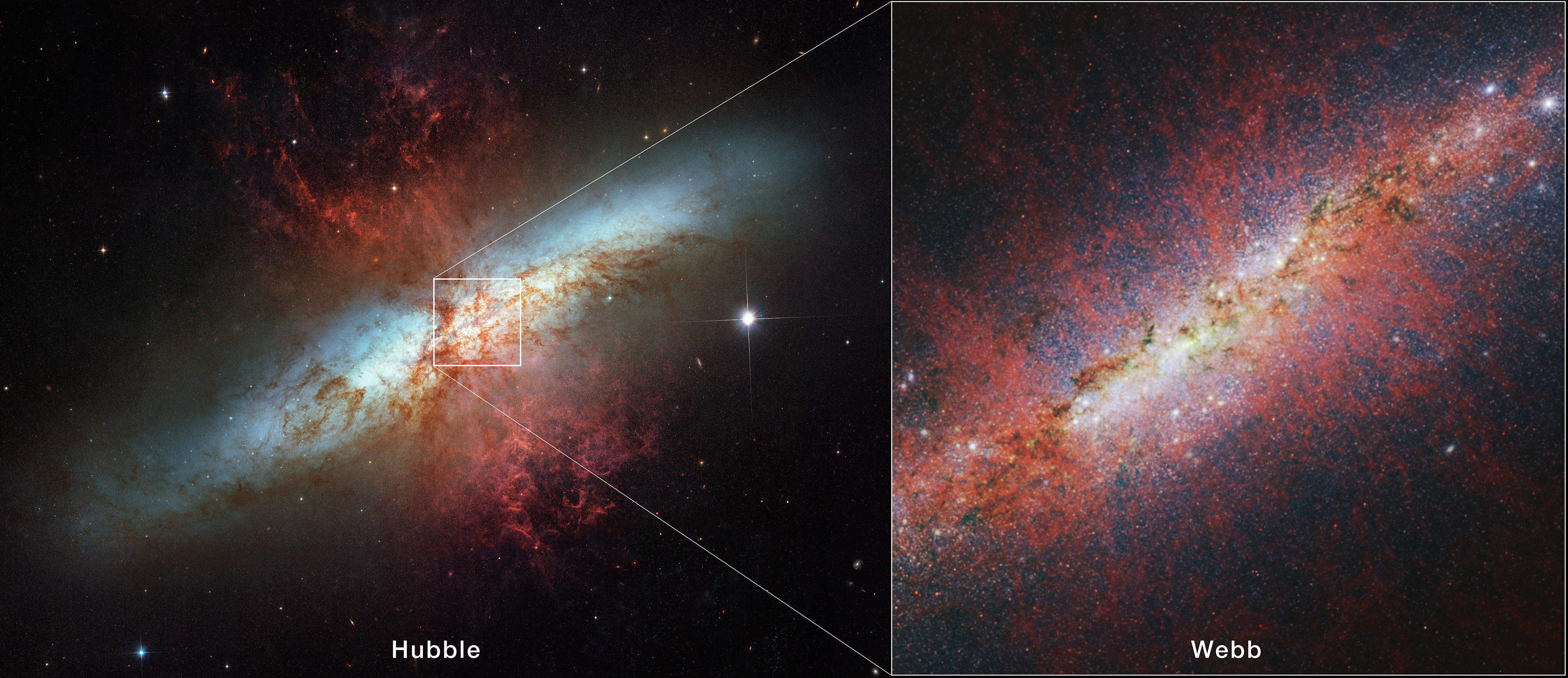
NASA’s Webb Probes an Extreme Starburst Galaxy
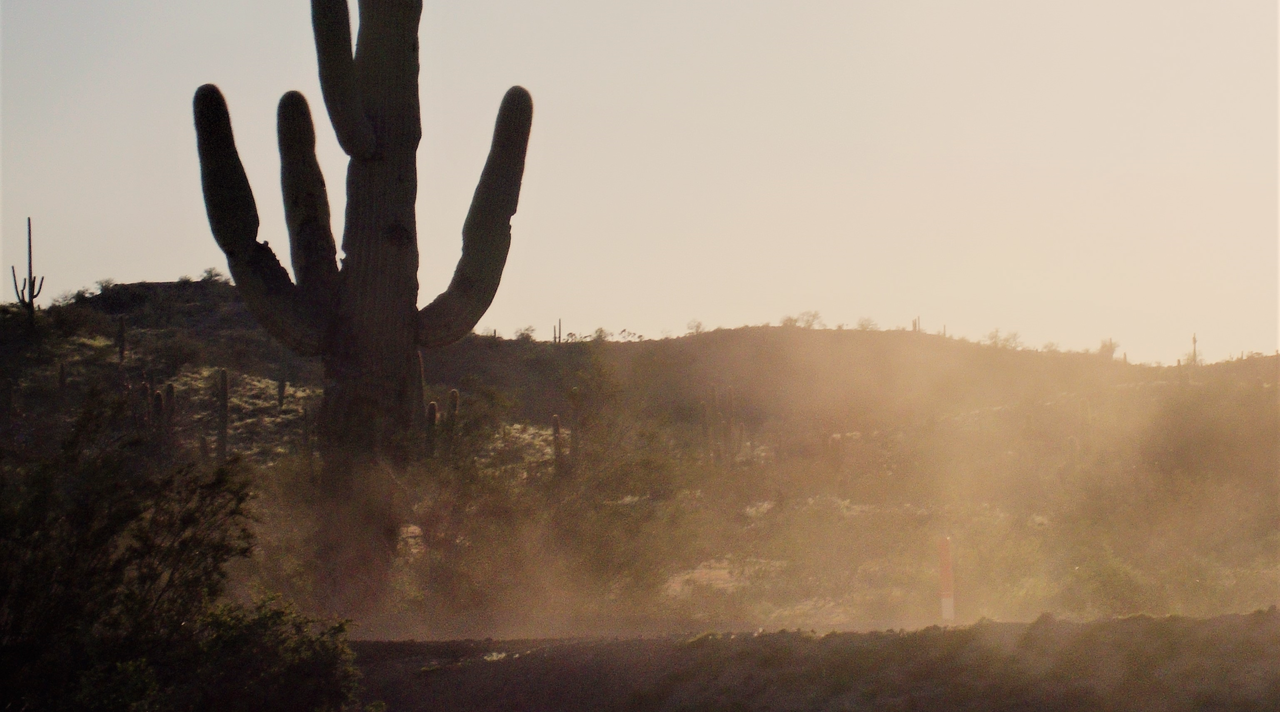
Amendment 8 A.44 Earth Action: Health and Air Quality Applied Sciences Team Final Text and Due Dates.

Introduction to Spectrum

NASA Langley Team to Study Weather During Eclipse Using Uncrewed Vehicles

NASA Noise Prediction Tool Supports Users in Air Taxi Industry

ARMD Solicitations

Tech Today: Synthetic DNA Diagnoses COVID, Cancer

David Woerner

Tech Today: Cutting the Knee Surgery Cord

NASA Partnerships Bring 2024 Total Solar Eclipse to Everyone
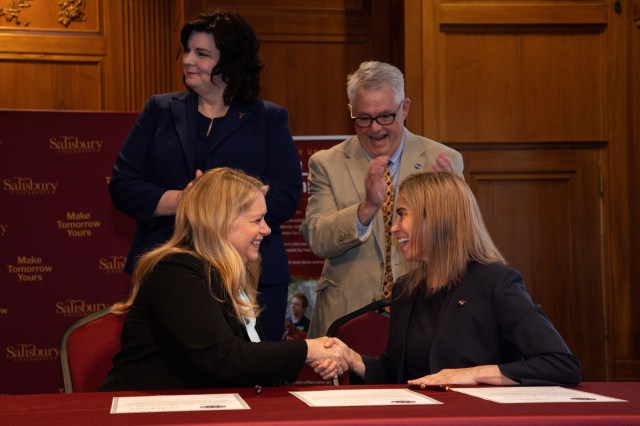
NASA, Salisbury U. Enact Agreement for Workforce Development
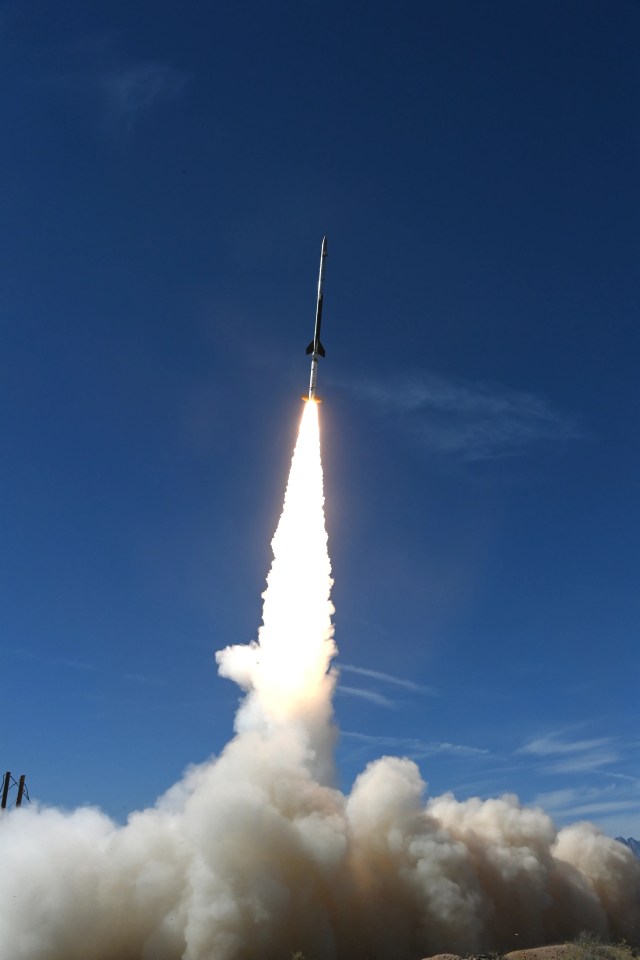
NASA Wallops to Launch Three Sounding Rockets During Solar Eclipse

Astronauta de la NASA Marcos Berríos

Resultados científicos revolucionarios en la estación espacial de 2023
To view this video please enable JavaScript, and consider upgrading to a web browser that supports HTML5 video
Langley: A Storied Legacy, A Soaring Future
NASA Langley – 100 Years: Something happened 100 years ago that changed forever the way we fly, the way we explore space and how we study our home planet. That […]
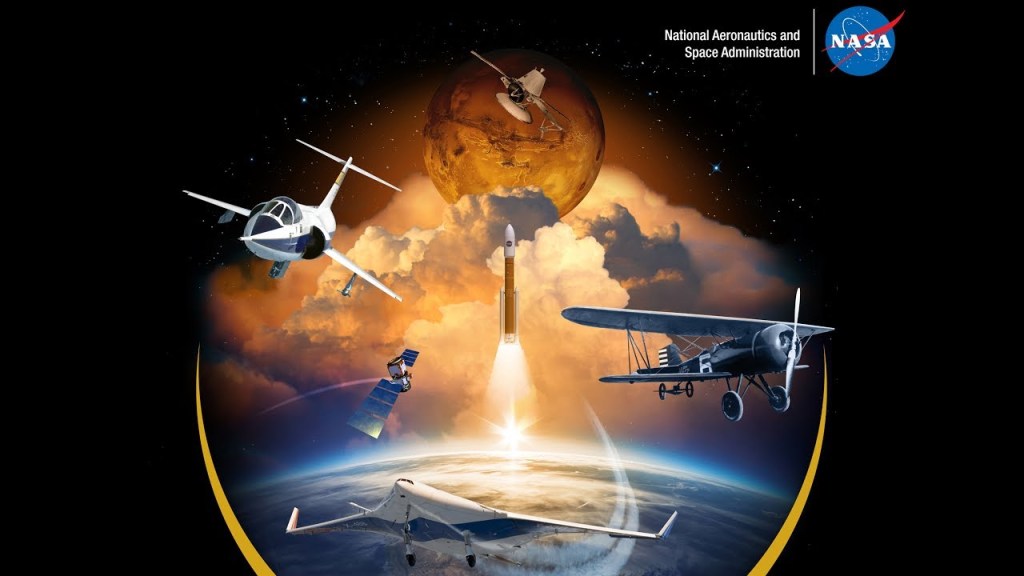
- Open Video Player
- WhatsApp https://plus.nasa.gov/video/langley-a-storied-legacy-a-soaring-future/ Copy URL to clipboard> Share
NASA Langley – 100 Years: Something happened 100 years ago that changed forever the way we fly, the way we explore space and how we study our home planet. That something was the establishment of what is now NASA’s Langley Research Center in Hampton, Virginia, which commemorates its 100th anniversary on July 17, 2017. Astronaut Neil Armstrong, the first human to step foot on the moon and who learned how to do so by training at Langley said, “If a competition were held to determine the organization that had accomplished the largest number of advancements to aeronautic and aerospace progress, my nomination would be this place.”
This documentary looks back across the 100 years, updates us on work being done at Langley today, and takes a peek into the future.
- Page Last Updated: Apr 7, 2024
- Responsible NASA Official: Rebecca Sirmons
The Office of Safety and Mission Assurance (OSMA) assures the safety and enhances the success of all NASA activities through the development, implementation and oversight of agencywide safety, reliability, assurance and space environment sustainability policies and procedures. OSMA includes the Mission Assurance Standards and Capabilities Division, Missions and Programs Assessment Division, Institutional Safety Management Division, and NASA Safety Center, as well as the Independent Verification and Validation Program.
Contact Us
Responsible for
- Establishing and assuring compliance with NASA Safety and Mission Assurance (SMA) strategies, policies and standards
- Fostering early integration and life cycle implementation of Safety, Reliability, Maintainability and Quality Assurance (SRM&QA) into NASA's programs and operations
- Improving methodologies for risk identification and assessment and providing recommendations for risk mitigation and acceptance
- Performing independent SMA assessments and process verification reviews
- Providing analysis and recommendations for critical agency safety decisions
- Sponsoring the innovation and rapid transfer of SRM&QA technologies, processes and techniques to improve safety and reliability and reduce the cost of mission success
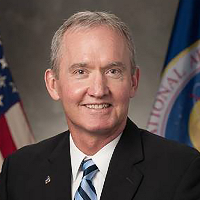
W. Russ DeLoach
William Russ DeLoach is NASA's chief of Safety and Mission Assurance (SMA). Appointed to this role in January 2021, DeLoach is responsible for the development, implementation and oversight of SMA policies and procedures for all NASA programs.
Prior to this assignment, DeLoach served as the SMA director at NASA’s Johnson Space Center, where he led a dedicated team of experts in assuring workforce safety and collaborating on smart solutions to human spaceflight risks since February 2019. His team worked to identify, characterize, mitigate and communicate risk to accomplish safe and successful human space exploration.
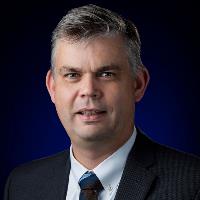
Frank Groen
Deputy chief.
Dr. Frank J. Groen is the deputy chief of NASA’s Office of Safety and Mission Assurance (OSMA). In this position, he is responsible for executive leadership, policy direction, functional management and coordination for agency-wide program and institutional Safety and Mission Assurance (SMA) activities.
Prior to be appointed to this position, Groen was the director of the Safety and Assurance Requirements Division within OSMA, responsible for the development and maintenance of NASA directives and standards pertaining to SMA, as well as related methods, tools and guidance.
Organizational Chart
This organizational chart shows the various areas of the Office of Safety and Mission Assurance (OSMA), the relationships between these areas, and staff information.
The Office of Safety and Mission Assurance (OSMA) includes the Mission Assurance Standards and Capabilities Division (MASCD), Missions and Programs Assessment Division (MPAD), Institutional Safety Management Division (ISMD), and NASA Safety Center (NSC), as well as the Independent Verification and Validation (IV&V) Facility.

Mission Assurance Standards and Capabilities Division
The Mission Assurance Standards and Capabilities Division (MASCD) fosters and continually advances the state of NASA’s Safety and Mission Assurance (SMA) through the development and promulgation of policy, standards, guidance, technical knowledge and capabilities.

Missions and Programs Assessment Division
The Missions and Programs Assessment Division (MPAD) is the primary interface between OSMA and the NASA Mission Directorates. MPAD supports the formulation and implementation of Safety and Mission Assurance objectives and requirements by the directorates and human spaceflight enterprises.

Institutional Safety Management Division
The Institutional Safety Management Division (ISMD) monitors, promotes and actively maintains and improves the Institutional Safety discipline areas and helps identify and mitigate Institutional Safety risks.
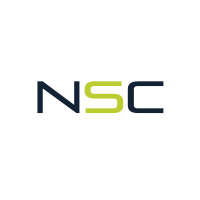
NASA Safety Center
The NASA Safety Center (NSC) provides SMA expertise, information, verification and analysis to enable collaboration and learning while promoting a safe workplace and successful programs and projects.

Independent Verification and Validation
NASA's Independent Verification and Validation (IV&V) Program was established in 1993 as part of an agencywide strategy to provide the highest achievable levels of safety and cost-effectiveness for mission critical software.
Johnny Nguyen
Missions and programs assessment division director.
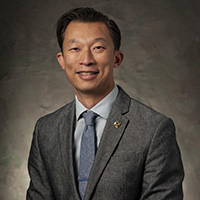
Johnny T. Nguyen is currently the director of the Missions and Programs Assessment Division. In this position, he leads Safety and Mission Assurance (SMA) activities in support of NASA's diverse portfolio of missions and programs, including spacecraft, science payloads, launch vehicles, technology development and aeronautics. In addition, he provides the Office of Safety and Mission Assurance's primary interface with the NASA mission directorates and the center SMA organizations.
Prior to this role, Nguyen was the associate manager for Integration and Analysis in Gateway Deep Space Logistics located at Kennedy Space Center. In this role, Nguyen provided project management leadership for the logistics missions for Gateway in the areas of budget, resources, workforce, governance, contract management, configuration management, Risk Management and life cycle schedule.
Previously, Nguyen was an office chief in Kennedy SMA Directorate. Here, he provided leadership and direction for planning, organizing and leading special projects and assuring that safe, efficient requirements, policies, practices and processes were established. Nguyen also served as the Kennedy senior strategic advisor, providing strategic guidance to all levels of leadership. He helped to identify overall Kennedy goals and objectives and then communicated and aligned center priorities to meet the objectives of the NASA Strategic Plan. In April 2014, Nguyen graduated from the White House Initiative on Asian American and Pacific Islanders’ sponsored Senior Executive Service Development Program. Nguyen served as the chief of the Fluids Test and Technology Development Branch at Kennedy in October 2009. He was also the Kennedy Space Shuttle Transition and Retirement manager, which oversaw the strategy and execution on how to properly and most effectively transition the 300+ facilities and over one million line items of personal property located at Kennedy.
Nguyen attended the University of Central Florida where he received a Bachelor in Science degree in mechanical engineering and a master’s in business administration. He has worked for Kennedy since 1998. Nguyen is a first generation Vietnamese who enjoys traveling and drawing.
CHIEF, SAFETY AND MISSION ASSURANCE
He previously held the same role at NASA’s Kennedy Space Center, where he was responsible for the planning and execution of center and program activities. In this capacity, he developed transformative SMA approaches to enable the success of Kennedy as the world’s premier multi-use spaceport.
DeLoach began his NASA career in 1987, on assignment as an intern in the Army Material Command’s Quality and Reliability Engineering training program. Returning to Kennedy, he conducted Reliability and System Safety analyses, as well as technical reviews and assessments of integrated ground systems, equipment, and operations for the Space Shuttle and International Space Station programs. In 2000, he was selected as the SMA branch chief within the Shuttle Processing Directorate, providing surveillance of space shuttle ground operations.
As his career progressed, he served as the shuttle processing mission assurance manager supporting ground processing, launch and landing. In 2006, DeLoach stood up the SMA Support Office for the emerging Constellation Program and later oversaw the transition of Constellation efforts to support Orion and the Space Launch System. After the retirement of the space shuttle in 2011, he was instrumental in the transformation of Kennedy to a thriving multiuser spaceport, developing an approach to enable public-private partnerships in a manner that maintains an acceptable risk posture for NASA, while allowing flexibility and innovation for commercial interests. He became Kennedy’s deputy director of SMA in 2012 and then SMA director in 2014.
DeLoach holds a bachelor’s degree in mechanical engineering from the University of Florida in Gainesville. He is married to Janice, a retired educator, and they have three grown children.
Agency Safety Working Group Leads
Grant watson, institutional safety management division director.
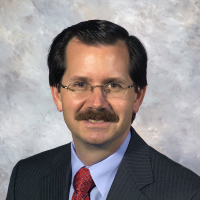
Grant Watson is the director of the Institutional Safety Management Division in the Office of Safety and Mission Assurance. In this role, Watson is responsible for facilitating a team dynamic across the centers, advocating for centers at the Headquarters level, establishing delegated safety program leads, driving policy direction and change, and implementing Institutional Safety Authority.
Prior to this role, Watson was the Safety and Mission Assurance (SMA) director at NASA Langley Research Center in Hampton, Virginia. In this role, he was the senior management official responsible for the health and safety of over 3,600 engineers, technicians and scientists. He also was responsible for facility assurance of research facilities valued at more than $3.3 billion.
Langley, founded in 1917, is the nation’s first civilian aeronautical research facility and NASA’s oldest field center. Langley was the first federal facility to achieve the Occupational Safety and Health Administration’s (OSHA) Voluntary Protection Programs Star status in 1998, and was re-certified in 2002, 2007 and 2012. This recognition by OSHA is indicative that Langley’s health and safety program is world-class. Watson has played a role in implementing, developing and leading this world-class health and safety program since 1995.
Watson has more than 20 years of SMA experience, performing or leading work in the following areas: Occupational Safety, industrial hygiene, health and medical, facility assurance, Fire Protection, emergency services, System Safety, Reliability, and Quality Assurance. He has held key SMA positions at NASA’s Kennedy Space Center and Langley, worked in private industry, and supported the Federal Aviation Administration’s Office of Commercial Space Transportation. He also contributed to the mission success of numerous space shuttle launches, the Ares 1-X vehicle, and the Clouds and the Earth’s Radiant Energy System instruments.
Watson is a graduate of the Florida Institute of Technology where he received bachelor’s and master’s degrees in mechanical engineering. He received a master’s degree in engineering management from Old Dominion University and is a recipient of the NASA Outstanding Leadership Medal.
He currently resides in Yorktown, Virginia, with his wife and enjoys running and spending time with his daughters.
Nuclear Flight Safety Officer

Donald "Don" Helton is the Nuclear Flight Safety Officer in the NASA Office of Safety and Mission Assurance, responsible for reviewing the Nuclear Launch Safety Approval Requests submitted by programs and projects that plan to launch radioactive material in to space, in accordance with NASA directives and requirements. In this role, he also coordinates the Interagency Nuclear Safety Review Board, which evaluates the quality of the safety analysis associated with nuclear missions that meet criteria specified in NSPM-20, “Presidential Memorandum on Launch of Spacecraft Containing Space Nuclear Systems,” issued Aug. 20, 2019.
Prior to his current role, Helton was a senior reliability and risk analyst at the U.S. Nuclear Regulatory Commission (NRC). In this role, he performed risk assessment activities related to the significance determination of inspection findings and emergent conditions for operating commercial nuclear power plants, contributed to broad agency activities in Risk-Informed Decision Making, and supported the development of regulatory guidance relating to the use of risk-informed regulation. During his 18 years at the NRC, Helton developed and reviewed probabilistic safety assessments for spent fuel wet storage, including its use in both safety basis activities and National Environmental Policy Act activities; served as the NRC-appointed technical adviser for the nuclear launch safety review of the Mars 2020 Interagency Nuclear Safety Review; contributed to risk assessment consensus standard development; and served as a Subject Matter Expert in Level 2 Probabilistic Risk Assessment for an International Atomic Energy Agency review mission. Separately, Helton served in varying roles as a responder for the NRC’s Emergency Operations Center. He was a recipient of the NRC's Meritorious Service Award.
Helton has a master’s degree in nuclear engineering from Texas A&M university, focused on the use of computational fluid dynamics in nuclear applications, including a traineeship at France’s Le Commissariat a L’Energie Atomique’s Centre Saclay. He also holds a bachelor’s degree in nuclear engineering from North Carolina State University, which included research in the area of reactor physics. He was born and raised in Union County, North Carolina. Helton currently resides in Rockville, Maryland, with his wife and two daughters. He spends his free time fishing, biking, volunteering and playing guitar.
Matt Forsbacka
Mission assurance standards and capabilities division director.
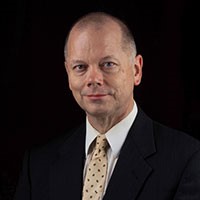
Dr. Matthew “Matt” Forsbacka is the Mission Assurance Standards and Capabilities Division director, responsible for the development and maintenance of NASA directives and standards pertaining to SMA, as well as related methods, tools and guidance.
Previously, Forsbacka served as the Nuclear Flight Safety Assurance Manager (NFSAM) for the Safety and Requirements Division of the Office of Safety and Mission Assurance (OSMA). He was responsible for reviewing the Nuclear Launch Safety Approval Requests submitted by programs and projects that plan to launch radioactive material in space. In this role, he also coordinated ad hoc Interagency Nuclear Safety Review Panels, which evaluate the risk to the public and environment for any mission containing radioactive materials above the prescribed threshold. Forsbacka also was the OSMA representative for the Nuclear Systems, Space Radiation and Space Protection Working Groups.
Forsbacka also previously served as the Micrometeoroid and Orbital Debris (MMOD) program executive. As the program executive for MMOD, Forsbacka was responsible for program execution of NASA’s Procedural Requirements for limiting Orbital Debris.
Forsbacka did a detail at NASA Glenn Research Center as chairman of the Standing Review Board for NASA’s Radioisotope Power Systems program. As chairman, he led review teams that report findings to Glenn’s Center Management Council, the leadership of NASA's Science Mission Directorate (Planetary Science Division) at NASA Headquarters, the NASA administrator and the NASA Agency Program Management Council. He presented issues and proposed solutions to NASA senior management.
In addition, Forsbacka was a lecturer at the University of Maryland’s A. James Clark School of Engineering. He developed the “Innovative Reactor Design” course for the master’s degree in nuclear engineering, which he then taught. He also taught “Verification and Validation of Systems Engineering Projects” and “Reactor and Radiation Measurements Laboratory.”
Prior to his current role, Forsbacka was an engineering supervisor for the Defense Nuclear Facilities Safety Board. In this role, he led a group of Subject Matter Expert engineers in the fields of nuclear, mechanical, electrical, seismic, structural, civil and materials engineering that perform safety reviews of major DOE projects at all phases of the life cycle throughout design and construction. Projects included Waste Treatment and Immobilization Plant at the Hanford Nuclear Reservation, Uranium Processing Facility at the Y-12 National Security Complex, Chemistry and Metallurgy Research Replacement Project for the Los Alamos National Laboratory, Salt Waste Processing Facility at the Savannah River Site, and the Permanent Ventilation System for the Waste Isolation Pilot Plant. In this role, he also was responsible for strategic planning and program development within his area of responsibility as well as for the implementation of review plans conducted by the technical staff. This involved developing, reviewing and providing proposed program requirements for safety oversight activities, as well as projections of expected results and budgetary/resource estimates. He reviewed and approved staff work products before submission to the presidentially-appointed board members for action in advising the secretary of energy on safety issues.
Before joining the Defense Nuclear Facilities Safety Board, Forsbacka worked for the Department of Homeland Security’s Domestic Nuclear Detection branch. Here he served as the deputy assistant director, a position in which he led a group of 40 senior engineers and scientists to develop anti-terrorism and radiological emergency response nuclear detection systems for use by the Department of Homeland Security law enforcement officers responsible for securing U.S. borders and coastal regions.
Forsbacka also has a history of working for NASA, having been the program executive for the Lunar Reconnaissance Orbiter from 2005 to 2007. He was responsible for all aspects of NASA Headquarters’ mission oversight of this project. Prior to that role, he was the acting director for the Prometheus nuclear systems technology, responsible for all cross-discipline efforts in nuclear power and propulsion technologies for NASA. He also was the program manager for nuclear systems and the program executive for fission systems.
As a captain in the U.S. Air Force, Forsbacka held various roles, which included program manager for the Defense Threat Reduction Agency, master instructor of physics for the U.S. Naval Academy and reactor operations supervisor for the Armed Forces Radiobiology Research Institute.
Forsbacka has a doctorate in nuclear engineering from the University of Virginia and both a master’s and bachelor’s degree in nuclear engineering from the University of Florida. Forsbacka resides in Silver Spring, Maryland with his wife and three daughters and is an avid bicycle commuter.
Delegated Programs
The Mission Assurance Standards and Capabilities Division delegates responsibility for the following programs to a center program manager:
Deirdre Healey
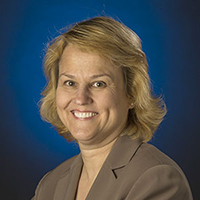
Deirdre Healey is the director of the Office of Safety and Mission Assurance (OSMA) Missions and Programs Assessment Division at NASA Headquarters. In this position, she leads Safety and Mission Assurance (SMA) activities in support of NASA's spacecraft (including the International Space Station and space hardware developed for exploration programs and commercial space activities), science payloads, expendable launch vehicles and aeronautics programs. In addition, she provides OSMA’s primary interface with the NASA mission directorates, the Office of the Chief Technologist and the center SMA organizations.
Previously, Healey supported SMA activities for the Human Exploration and Operations Exploration Systems Directorate where she led efforts to incorporate SMA policies and tenets into the agency’s various human space flight programs including Orion, the Space Launch System and the new Commercial Crew Program.
Healey has more than 26 years of experience in space systems SMA, program management, engineering, operations and policy. Prior to joining NASA, she led development and operations of national and international space systems in the U.S. Air Force. She held various roles including program manager for the Inertial Upper Stage Rocket Booster Program, director of Titan Program Operations and Integration, deputy program manager for Launch Projects at Cape Canaveral Air Station, chief of the International Policy Branch for United States Strategic Command, and technical director for requirements at the Air Force Satellite Control Network. In addition, she served on various Mishap Investigation Boards including the president-commissioned Launch Broad Area Review and the Titan IVA-20 Accident Investigation Board.
Healey has a master's degree in government from Harvard University and a bachelor's degree in aerospace engineering from the University of Illinois.
Frank J. Groen
Deputy chief, office of safety and mission assurance .
Groen worked in OSMA as the manager for Reliability and Maintainability (R&M), and also served as the document manager for NASA’s Human Rating Directive and program executive for NASA’s Expendable Launch Vehicle Payload Safety Program. During this period, he introduced the safety goal policy for human spaceflight missions to the Human-Rating Directive, oversaw the development of an accident precursor analysis methodology for NASA and initiated an objectives-driven approach for the standardization of R&M activities.
Before joining NASA, Groen was active in academia and industry, where he focused on method and tool development in the field of reliability and risk assessment, with a focus on Bayesian data analysis, accident scenario modeling and analysis, and Monte Carlo simulation. He received his Doctor of Philosophy degree in reliability engineering from the University of Maryland in 2000 and a Master of Science degree in mechanical engineering from the Delft University of Technology, Netherlands.
Terrence W. Wilcutt
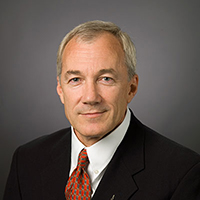
Terrence W. Wilcutt is NASA's chief of Safety and Mission Assurance. Appointed to this role in September 2011, Wilcutt is responsible for the development, implementation and oversight of all Safety and Mission Assurance policies and procedures for all NASA programs.
Wilcutt is a retired Marine colonel and veteran astronaut who previously served as director of Safety and Mission Assurance at NASA's Johnson Space Center from 2008 to 2011. In that position, Wilcutt was tasked with the Safety Technical Authority of the programs and projects at Johnson, as well as the center's Institutional Safety program.
Wilcutt joined NASA in 1990 as an astronaut candidate and was accepted into the corps in 1991. He logged more than 1,007 hours in space as the pilot on two shuttle missions, STS-68 in 1994 and STS-79 in 1996, and commander of two others, STS-89 in 1998 and STS-106 in 2000. His technical assignments as an astronaut included work on space shuttle main engine and external tank issues; supporting shuttle launches and landings as a member of the astronaut support personnel team at Kennedy Space Center; and technical issues for the Astronaut Office Operations Development Branch at Johnson.
Wilcutt also served as NASA director of operations at the Yuri Gagarin Cosmonaut Training Center in Star City, Russia; and at Johnson as chief of the Astronaut Office Shuttle Operations Branch, manager of Safety and Mission Assurance for the Space Shuttle Program, and deputy director of Safety and Mission Assurance.
A native of Louisville, Kentucky, Wilcutt earned a Bachelor of Arts degree in math from Western Kentucky University in 1974. He taught high school math for two years before entering the Marine Corps in 1976 and earned his naval aviator wings in 1978.
From 1980 until 1983, he was stationed in Kaneohe, Hawaii, and flew F-4 Phantoms during two overseas deployments to Japan, Korea and the Philippines. For the next three years, he served as an F/A-18 fighter weapons and air combat maneuvering instructor while assigned to Squadron VFA-125 at Lemoore Naval Air Station in California. From 1986 until his selection by NASA, Wilcutt attended the United States Naval Test Pilot School and served as a test pilot and project officer for the Strike Aircraft Test Directorate of the Naval Aircraft Test Center in Patuxent River, Maryland, flying the F/A-18 Hornet, the A-7 Corsair II, the F-4 Phantom and other aircraft. He has more than 6,600 flight hours in more than 30 different aircraft.
Wilcutt has received numerous special honors, including NASA's Outstanding Leadership Medal, Distinguished Service Medal, Exceptional Service Medal and four space flight medals; the Distinguished Flying Cross; the Defense Superior Service and Meritorious Service medals; and the Navy Commendation Medal. He also has received the American Astronautical Society Flight Achievement Award; the V.M. Komarov Diploma, Federation Aeronautique Internationale space award for outstanding achievements in space exploration; and distinguished alumnus recognition and an honorary doctorate degree from Western Kentucky University.
Wilcutt maintains offices in Houston and Washington.

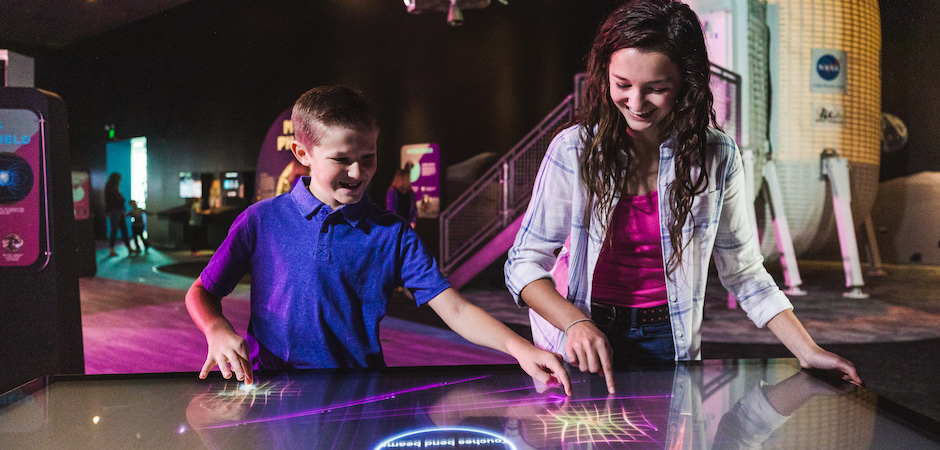
Come & Explore Our New & Improved Spaces!
The new Space Exploration Gallery and Adventures in Early Learners Gallery The SPACE (Smile, Play, Achieve, Create, Explore), invites you to celebrate the spirit of exploration through state-of-the-art, interactive exhibits that explore our solar system! Come and enjoy our galleries that are designed for explorers of all ages!
Also, check out unique space flight artifacts such as the Apollo 12 Command Module and tons of historic aircraft
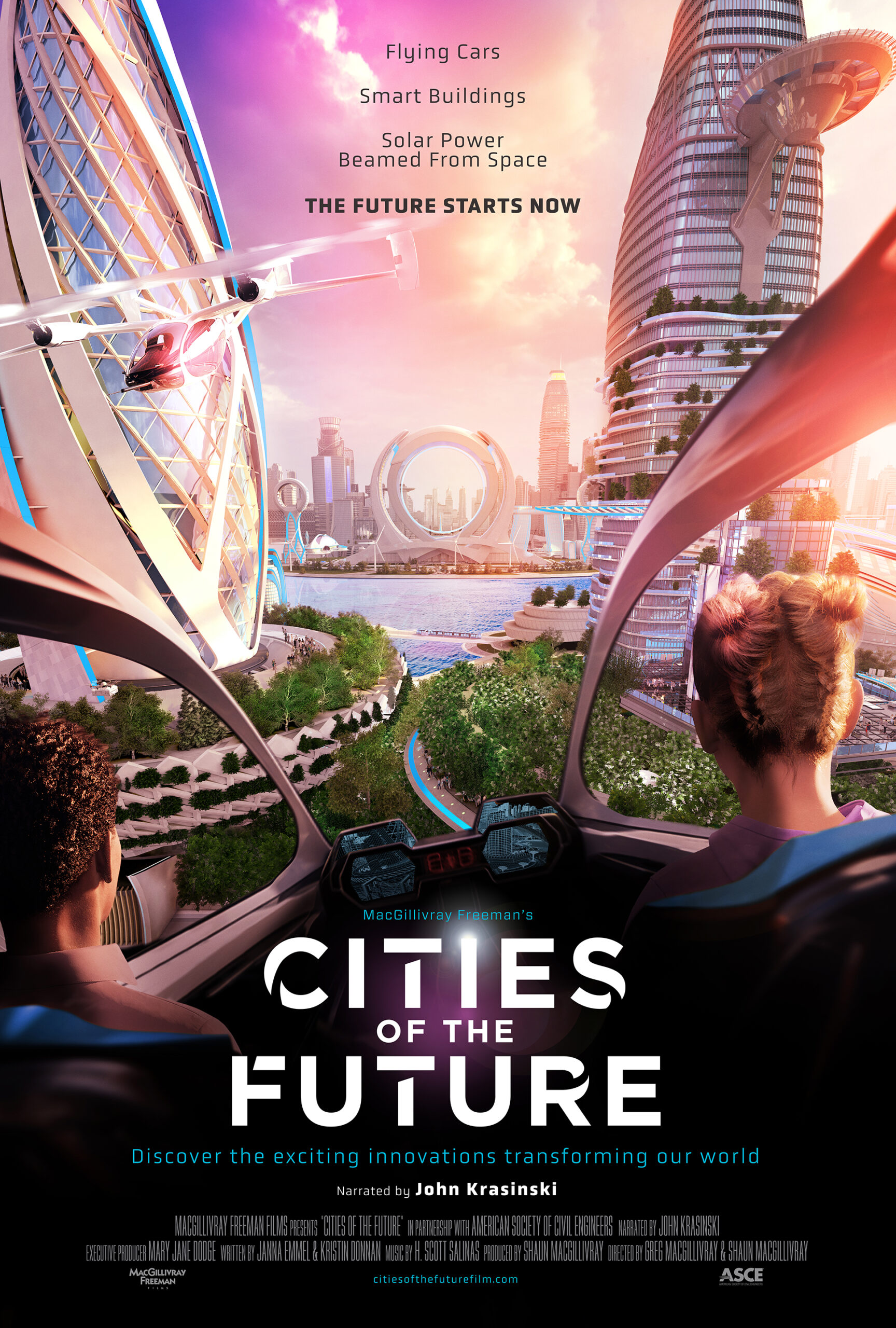

IMAX Theatre
Cities of the future.
Prepare to step into the future and discover a world where smart cities are totally sustainable. Renewable energy is our primary power source, solar energy beamed down from space powers entire cities, and we travel in electric flying cars on aerial highways! This isn’t science fiction. Engineers are making plans for a more sustainable world right now. And it’s coming to the giant screen! Learn more in the new film “Cities of The Future”.
The highly anticipated documentary brings the awe-inspiring images captured by NASA’s Webb Telescope to IMAX® — taking audiences on a journey to the beginning of time and space, to never-before-seen cosmic landscapes, and to recently discovered exoplanets, planets around other stars.
Astronaut: Ocean to Orbit
In 2013, a critical life-support system on the International Space Station failed, requiring an immediate spacewalk to fix it. NASA astronaut Chris Cassidy made the repair and saved the Space Station. As an astronaut, he was trained extensively for space walks. But how do astronauts train here on Earth to work in the microgravity of space …
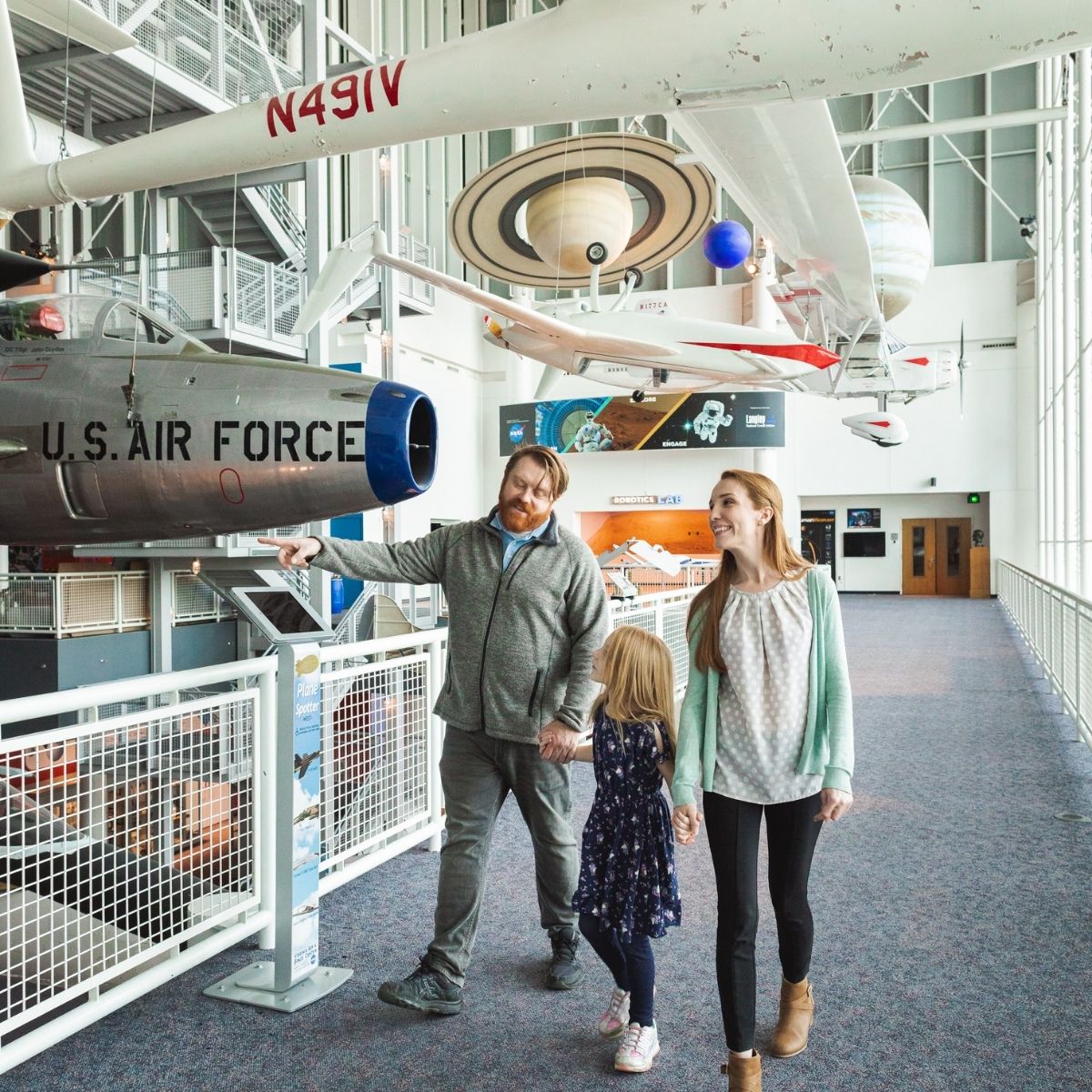
Become a Member TODAY!
Membership includes unlimited exhibit and IMAX admission for one year & free Admission to 300+ reciprocal science/natural history centers around the world through the ASTC Passport Program.
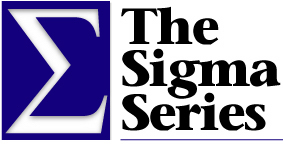
Sigma Series Lectures
Although in-person talks were cancelled from April through November of 2020, Sigma Series lectures resumed in December via the wonder of live-streaming! Click ‘Learn More’ to see what exciting topics are coming up for discussion.
Hours of Operation
Ticket prices.

- Key Personnel
- Areas of Expertise
- Wind Tunnel Testing Guide
- Current Opportunities – NASA Langley Research Center
Current Opportunities – NASA Langley Research Center
You can make a difference in the future for all humanity. Click on the link(s) below to access current job openings or internship opportunities within the Research Directorate at NASA’s Langley Research Center in Hampton, VA.
See all current open positions on USA Jobs .
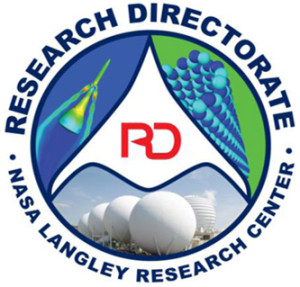
NASA Langley Research Center
- NASA Responsible Official: Jack Ryan Page Curator: Alexandra Olney Page Last Modified: Dec 27, 2023 Privacy Policy | No Fear Act | FOIA | 508 | NASA Home
We are excited to announce…

NASA's Langley Research Center cordially invites the public to see where aerospace history was made and where the triumphs of tomorrow are taking shape now.
Join us for this special day to gain a glimpse of the unique and exciting work taking place at NASA's Langley Research Center.
Saturday, october 21st from 9 a.m. to 4 p.m..
Embark on a journey through historic buildings and brand new laboratories.
Visit incredible state of the art facilities designed to get us to the moon and beyond, discover the future of flight with our aviation experts, and hear about what NASA is doing to understand more about our planet in the face of climate change.
Experience hands on activities for kids and families and stay tuned for some out of this world surprises.
The event is open to the public. Admission is free.
Register Here To Attend
Please check back often for the most up-to-date information.
Open House Guide / Itinerary
tours, parking information, and event schedules

We have a Clear Bag Policy. Only clear backpacks, clear purses, or diaper bags will be authorized.
Welcome Information
View important information before coming to the center and our clear bag policy .

NASA Langley Research Center will be open to the public on Saturday, October 21st. This Open House event is an exciting opportunity for ...

We will be taking photographs and video during our 2023 Open House activities. By attending, you consent to and authorize NASA to use photographs and video recordings in which your likeness may appear. These images and recordings may be included in NASA broadcasts, publications, videos, websites, and social media for education, promotion, and archival purposes.
Your Safety and Security is of utmost importance when you visit NASA Langley. Please read through some safety precautions and prohibitions to help us keep you and everyone safe.

Additional Resources
Space Weekend

Satellite Parking
View Parking Options and Parking Directions

Handicap Parking
Do you need handicap parking? View our list of options

5K Moonwalk & Run
Join NASA Langley Research Center for NASA Langley Open House 5K Moonwalk & Run!

Get a first-hand look at what NASA Langley has been doing.

Hands-On Activities
Coming soon!

Shows / Presentations / Speakers
Watch presentations, project demos, and hear from well known subject matter experts, engineers, scientists, and test pilots.

Food Trucks and Vendors
See the list of food trucks, and vendors available.

Entertainment
Fun Faces Face Painters, Bounce Houses by Space Walk of Yorktown, and much more!
What you expect to see
browse through the list of categories

NASA Langley Aerial
See NASA Langley from above
Interstellar Experiences of NASA Interns
100 Unique NASA Internship Opportunities Worth A Second Look (Fall ’24)
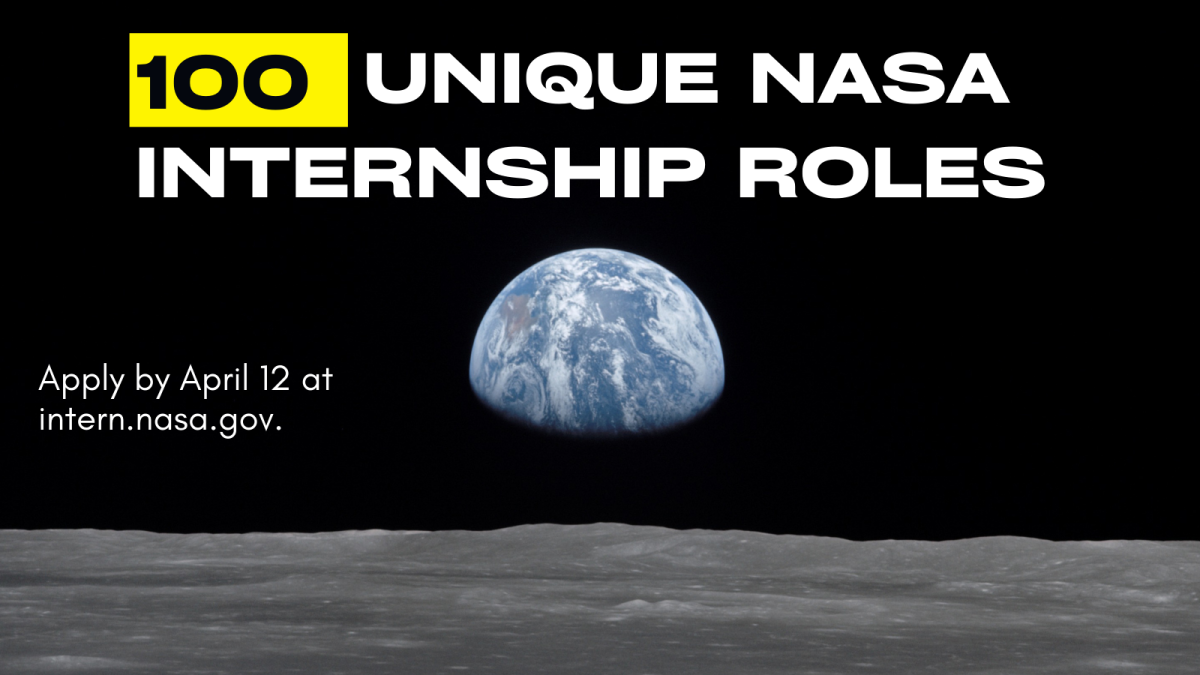
Remember: Applications for fall 2024 are due by April 12, 2024, at 11:59 p.m. ET.
Lasers, lunar architecture, and particle stoichiometry—nerd out with a NASA internship this fall!
With less than a week left to apply for our fall 2024 NASA internships, we’ve assembled this list of 100 unique opportunities you can apply to right now.
To get started:
- Head to stemgateway.nasa.gov and log in or create an account.
- Copy and paste the six-digit unique ID number for a role from the list below into the search bar.
- Review the specific details of the opportunity to see if you’d be a good fit.
- If interested, click the large apply button in the top right of the position listing.
- Repeat. (You can apply to more than one opportunity!)
Application Tip:
In the application when asked “Why do you want this NASA Internship?” give an honest response that demonstrates your passion or what you can bring to the role. This is one of the few places in your application to make yourself stand out.
List of Opportunities:
100. Surface to Space: Bringing new data to ecosystem models 018135
NTRS - NASA Technical Reports Server
Available downloads, related records.
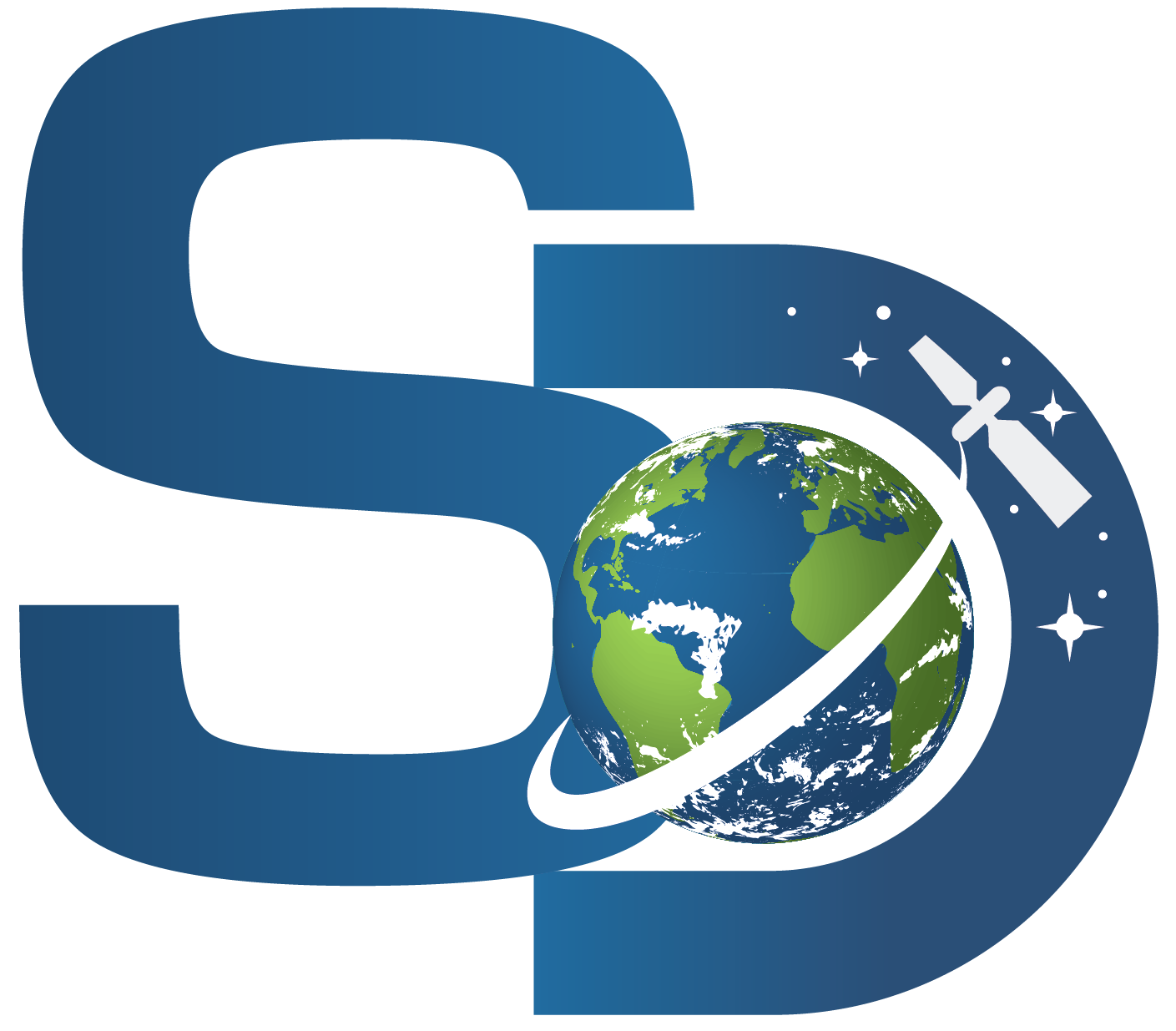
The Flight Mission Support Center (FMSC) at NASA Langley Research Center in Hampton, Va. is a key part of NASA’s vision to seek answers about out home planet by studying Earth from space.
Langley’s FMSC offers critical operations support for multiple airborne, balloon, and space-based projects. The state-of-the-art center provides leadership capabilities in training, planning, testing, monitoring, communications, and data collection.
Throughout all stages of a project’s lifecycle from planning to launch and activation, or entry, descent, and landing, the FMSC is a place where experts can work together to provide successful real-time solutions. The spacious facility houses data, video, and audio resources, creating a secure one-stop shop for NASA flight missions, the first of which will be Rad-X in 2015, followed by SAGE III/ISS in 2016.
Rules & Responsibilities
Rules and guidelines:
Please reserve usage of the room at FMSC.LARC.NASA.GOV/REQUEST
- Projects using the FMSC must supply their own SA support to configure the room for use. The SA support would work with the ISSO to make sure all equipment is compatible with IT security protocols.
- Projects must supply their own office supplies.
- The room must be kept clean and trash bins placed in the hall when full. Food garbage should be disposed of in the kitchenette, or the garbage should be placed in the hall.
- Once the project finishes with the room the room must be returned to its original configuration. (Projects should budget SA support for this activity too!)
- Network printers are in room 274 (behind the glass doors at end of hall) and room 207.
- While using room 210, the back conference room will be used by SAGE III for commanding purposes so alternate conference rooms need to be used for breakout meetings. Room 209 (EDS) is a good option
- Doors cannot be propped open! Security monitors these and an alarm is set off if propped open.
- If you need any network reconfigurations, please make these requests as early as possible, so that there is plenty of time for the changes to take effect.
- FMSC access is controlled through NAMS, and must be through NAMS request ACS-2102 Flight Mission Support (FMSC 210/212) or ID 233061. Please request this access as early as possible, to allow time for the process to complete.
Points of Contact
Contact 757-864-7777 (they will send you to the NICS POC, Custodian Lori Steinhau, End User Joseph Schrier) for any help with the audio video control panel located on the table near the white board. This control panel also is used for controlling the TVs on the walls.
Linda Goad, Facility Coordinator / Safety Head/ 757-506-4033/ MS 36/ Office 2102:144
Ronald Martin, Information Systems Security Officer (ISSO) 757-232-3165 [email protected]
Operating Manual
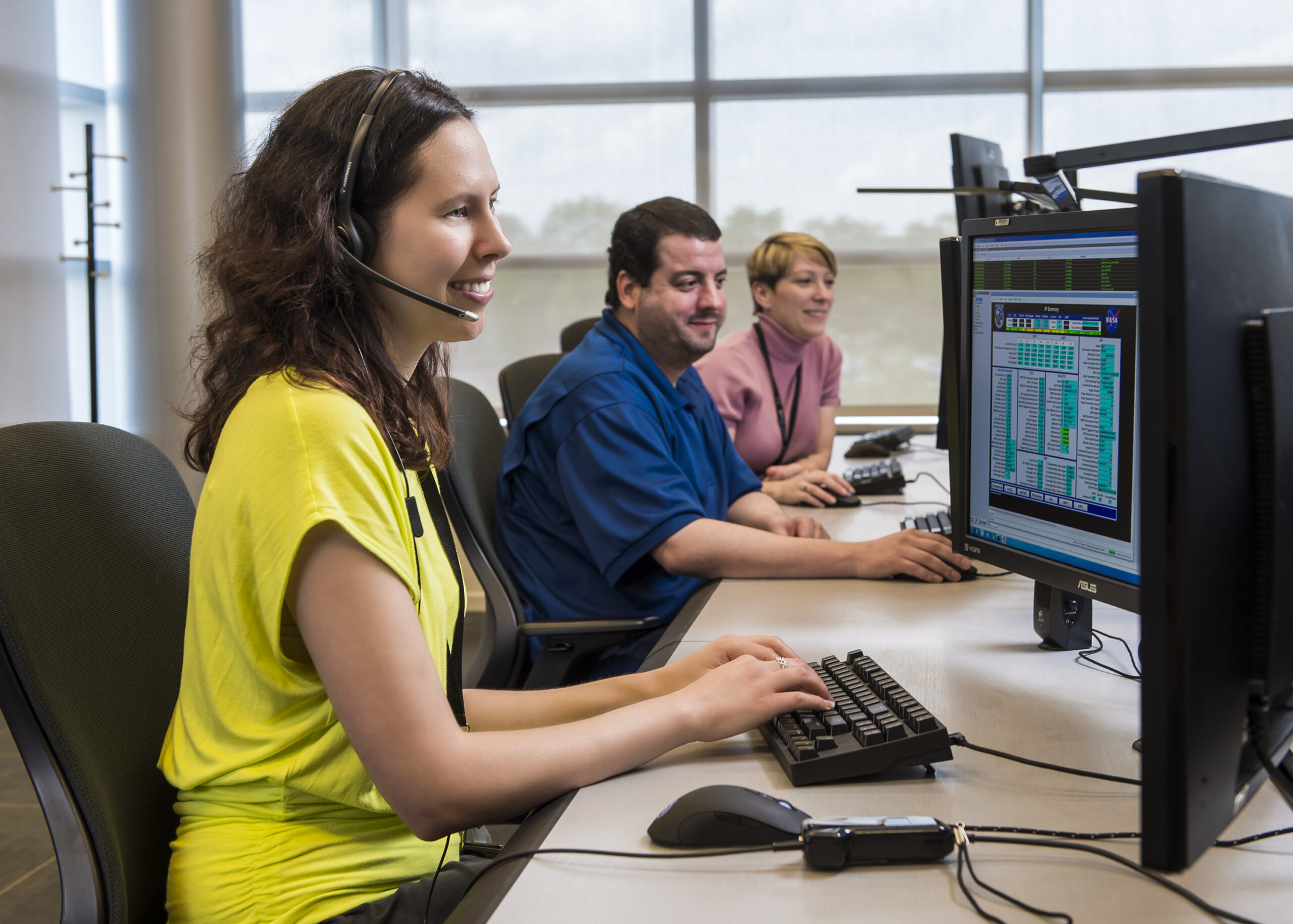
Information regarding use of FMSC.
Customer Guide for Room 212.
Customer Guide for Room 210.
In case of a tornado, everyone in the FMSC Rooms 210 and 212 should move to the IDS Room 209.
Any additional queries can be addressed to the following personnel:
Science Directorate Branch Head David Macdonnell Email: [email protected]
SAGE3 on ISS Mission Operations Manager Jamie Nehrir Email: [email protected]
Software Engineer/Configuration Management/Systems Administration Jonathan Hicks Email: [email protected]
January 24, 2022
Four joint flights were conducted this past Tuesday and Wednesday (Jan 18-19) to capitalize on another cold air outbreak event, similar to the previous week. We observed significant temperature variations in the various vertical profiles conducted by the low-flying Falcon, with evidence of significant precipitation near the transition from overcast to open-cell cloud conditions. A significant decreasing gradient in cloud drop number concentrations was observed with distance offshore especially during the January 18 flights.
June 20, 2022
ACTIVATE’s final flight deployment ended this past week with Research Flight 179 (Saturday June 18) transiting back from Bermuda to Virginia. A number of flights in the past week continued to build on the dataset for aerosol-cloud-meteorology interactions surrounding the Bermuda area, including on Tuesday June 14 a “process study flight” where the coordinated aircraft characterized a building cumulus cloud system. The Falcon conducted its traditional “wall” pattern used during process study flights with ~20 stacked legs going from below to above the cloud. Meanwhile the UC-12 flew overhead conducting remote sensing measurements of the same system while launching numerous dropsondes. A day earlier (June 13), the joint research flight conducted was synchronized with a CALIPSO overpass in conditions that are ideal for intercomparison of data including cloud-free air with significant aerosol concentrations and a diversity of aerosol types including in particular African dust. Now the ACTIVATE team focuses on processing and data archival of the 2022 flight deployments.
June 14, 2021
This past week included two double-flight days on Monday-Tuesday (June 7-8). June 7 was notable in that the second flight (RF 80) was a “process study” flight, which accounts for approximately 10% of ACTIVATE flights. We targeted an area with a cluster of clouds and conducted a total of 10 Falcon legs in cloud at different altitudes ranging from ~2 to ~13 kft. These legs and a subsequent downward spiral resulted in 10 cloud water samples for a single cloud system. Simultaneously, the King Air conducted a ‘wheel and spoke” pattern far above to allow the remote sensors to characterize the environment and cloud that the Falcon was directly sampling. A total of 14 dropsondes were launched by the King Air in the ~3 hr flight. This flight and the other “process study” flight in this summer campaign (RF77 on June 2) will provide a remarkable dataset to investigate aerosol-cloud-meteorology interactions with very detailed measurements for single evolving cloud systems.
March 15, 2021
ACTIVATE conducted four more successful joint flights (Research Flights 51-54) this past week. We characterized a variety of cloud conditions including post-frontal clouds associated with another cold air outbreak on Monday (March 8) in contrast to the following day (Tuesday March 9) where there was a sharp inversion with uniform cloud top heights and generally thin clouds. Flights this past week were marked by influence from local and regional burning emissions. The second of two flights on Friday (March 12) was coordinated with a CALIPSO overpass.
Febraury 5, 2021
ACTIVATE’s had its first joint flight of the winter 2021 campaign on February 3. We were successful to sample a transition from overcast stratocumulus clouds to broken cumulus clouds near our farthest southeast point of the flight track. There was extensive mixed-phase precipitation in areas closer to shore but pure liquid clouds farther offshore coinciding with the open cell cloud field. Although at low optical depth, an interesting aerosol layer was observed above 6 km that most likely was dust due to its depolarizing nature.
January 30, 2020
This past week ACTIVATE took to the skies again to begin our 2021 winter campaign. In contrast to last year, we started a bit earlier in the month of January to capitalize on a higher frequency of cold air outbreak events. Friday’s flights (January 29) were particularly ideal with both aircraft sampling along cloud streets aligned with the predominant wind direction coming from the north/northwest. We observed a transition from supercooled droplets to mixed phase precipitation with distance away from shore.
June 13, 2022
The past week coincided with a string of excellent weather conditions leading to eight joint flights between June 7-11 (RF166-173). There was evidence of African dust in the region that the aircraft sampled, in addition to coordinated efforts with glider platforms operated by the Bermuda Institute of Ocean Sciences to study the upper parts of the ocean surface that may affect the ACTIVATE measurements via sea-air interactive processes. Research flight 166 on 7 June was somewhat unique in that we sampled distinct cloud streets that we more commonly flew in during the winter season associated with cold air outbreaks. The ACTIVATE team also hosted a successful outreach event at the Longtail Aviation hangar featuring 40 students from three local grade schools.
June 6, 2022
On 31 May, the ACTIVATE team conducted a joint plane transit flight from Langley Research Center to Bermuda to base operations there until June 18. A series of flights (Research Flights 161-165) up through Sunday 5 June helped obtain statistics of atmospheric conditions around Bermuda. Many of the local Bermuda flights ended with a spiral sounding just offshore the Tudor Hill facility to obtain important vertical data for trace gases, aerosol, and weather parameters that will complement extensive surface monitoring work going on in coordination with the NSF-funded BLEACH project going on focused on halogen chemistry. Flights have already gathered important statistics associated with shallow “popcorn” cumulus cloud fields.
May 23, 2022
Four graduate students from the University of Arizona visited Langley Research Center to learn about and participate in the operational side of ACTIVATE. They took part in a very active flight week, with a total of eight joint flights deployed (Flights 153 - 160). Flights 156 and 157 on Wednesday, May 18th were special because these were the first flights to and from Bermuda that included a CALIPSO underflight. The CALIPSO track was clear of clouds and various aerosol layers such as smoke and dust were present. Another set of joint flights to and from Bermuda was conducted on Saturday, marking a successful end to the May flights. The next update will be in a couple weeks as the coming week will be used to prepare to fly out to Bermuda to base operations there from 1-18 June.
May 16, 2022
The previous week was marked by a persistent low pressure system positioned off the mid-Atlantic coast that impacted flight operations. Only one joint flight was conducted as a result on Tuesday (10 May; Research Flight 152), which featured strong northeasterly winds and warm air advection over the coastal cold waters created stratiform clouds near the surface. During parts of the flight there were several layers of decoupled stratiform cloud in the lower (free) troposphere. There was evidence of strong sea salt influence on this day with a high volume of cloud water samples collected that will be helpful for continued characterization of the cloud chemistry in the study region. This week was marked by some visitors to Langley Research Center from the science team including Hailong Wang (PNNL) and Minnie Park (BNL), along with Simon Kirschler who is visiting from DLR in Germany.
May 09, 2022
ACTIVATE’s sixth and final deployment began this past week with three successful joint flights (Flights 149-151). In contrast to the winter deployment, aerosol optical depths increased this past week with dust and smoke signatures, with the latter possibly stemming from plumes advected from the western United States. These data will be helpful to learn more about the impacts of these aerosol types on clouds even if they reside above cloud tops. On Thursday (5 May 2022) we conducted a successful refueling trip to Providence, Rhode Island marked by extensive cloud characterization and upwards of 20 cloud water samples helpful for cloud composition studies.
March 30, 2022
We wrapped up Deployment 5 on Tuesday after finishing a couple joint flights (Research Flights 146-148). Monday’s flight was intriguing owing to the diversity of aerosol types sampled ranging from the usual marine aerosol types such as sea salt to also smoke, dust, and pollen. Tuesday’s flights were excellent for cold air outbreak characterization including upwind clear air sampling and then also the transition from overcast cloud conditions to an open cloud field. We will begin Deployment 6 in the first week of May and conduct flights through the end of June.
March 28, 2022
After considerable effort and patience due to pandemic-related barriers, ACTIVATE was able to successfully execute its first flight to Bermuda this past week. Research flights 142-143 on Tuesday March 22 nd involved out-and-back flights from Hampton, Virginia to Bermuda. Flights to Bermuda are important for a number of reasons including the ability to extend the spatial range of data off the U.S. East Coast to be farther removed from continental and Gulf Stream influence and closer to more “background marine” conditions. Flights 144-145 on Saturday March 26 th were special in that a wide range of aerosol types were sampled including dust, smoke, sea salt, and biological particles especially in the form of pollen near the coast.
March 21, 2022
ACTIVATE had a golden flight day on 13 March 2022 (Sunday) with a cold air outbreak and two joint flights in morning and afternoon. In the morning flight we sampled an overcast cloud field that began to transition into a more broken field. We conducted 3 “walls” with the low flyer (Falcon) involving level legs below and in cloud stacked vertically on top of each other for better vertical characterization of the ‘aerosol-cloud system’. We launched 11 dropsondes with the high flyer (King Air). Data suggest significant new particle formation above cloud tops offshore during the cold air outbreak event. The two flights that day provide excellent data for model intercomparison to understand boundary layer cloud evolution. Later in the week (Monday March 14) was marked by smoke conditions offshore that the Falcon was able to characterize with its suite of instruments. Two graduate students and a research scientist from the University of Arizona visited NASA Langley Research Center this past week to learn about and participate in the operational side of ACTIVATE.
March 14, 2022
This week was dominated by a stalled cold front over the ACTIVATE flight domain, which prevented the team from executing flights most of the week owing to complex conditions that would affect data quality (e.g., mid and high level clouds impacting remote sensors on the King Air) and sampling of well-defined boundary layer clouds. We were successful though with flights at the beginning of the week (Research flights 135-136) on Monday March 7 th , including both clear air and cloud characterization to the southern part of our usual sampling domain. The following week appears to be very promising with cold air outbreak conditions setting up as soon as this Sunday March 13 th .
March 7, 2022
The past week of ACTIVATE flights (research flights 130-134) including more clear air characterization than past weeks, with both dust and smoke influence over the northwest Atlantic. Two of the flights consisted of a vertical spiral sounding in cloud-free and polluted conditions with the HU-25 Falcon with the King Air flying overhead, which will be helpful for a number of types of analyses, including intercomparison between aerosol remote sensing products from the HSRL-2/RSP (on the King Air) and in situ aerosol observations from the Falcon. The two flights on Friday March 4 th in particular were excellent as there was high cloud fraction across most of our sampling region which afforded a chance to sample clouds impacted by potential dust and smoke plumes.
March 1, 2022
After standing down for a week to swap the B200 with the UC-12 King Air, flights resumed this past week (research flights 120-125) with three days of double-flights (Feb. 15, 16, 19). The statistical database representative of typical wintertime conditions continued to expand with these flights that all included cloud sampling and similar characteristics as recent weeks. For instance, gradients of decreasing cloud drop concentration with distance east of the shore continued to be observed, along with both warm and mixed-phase precipitation, and situations where cumulus clouds connected to overlying stratiform clouds.
February 22, 2022
February 7, 2022
Research flights 115-119 in the past week continued the extensive characterization of the northwest Atlantic in during typical wintertime conditions. Notable features this week included gradients offshore such as how in flight 115 (Tuesday, Feb 1) clouds were initially scattered by the coast and then rapidly started to deepen and fill in forming an overcast deck on the outbound leg. Towards the northeast part of the flight path, clouds took on a distinctly decoupled appearance with cumulus clouds feeding an upper stratiform deck. Aerosol gradients were evident too with regard to number concentration and composition. These distinct differences in the study region on individual flights present a critical opportunity for data analysis to better understand the aerosol-cloud-meteorology system.
January 31, 2022
Six joint flights were conducted this past week, including three double-flight days between January 24 and 27. The two flights on January 24 th included more sampling towards the southern part of our operation domain to get more diversity in conditions with regard to weather and aerosol conditions. The two flights on Thursday (Jan 27) included a refueling stop at Providence, Rhode Island to allow us to extend our spatial range of sampling. That day included complex cloud structure with wave characteristics (i.e., variable base and top heights) and decoupling of cloud layers. There was an abundance of ice nuclei during the two flights on this day.
January 18, 2022
ACTIVATE returned with flights this past week by executing Research Flights 100-104, including consecutive double-flight days on Tuesday and Wednesday (January 11-12, 2022). The two flights on January 11 th were used to sampled upwind and into a region of clouds during a cold air outbreak event; the second flight was used to keep tracking the evolution of the cold air outbreak farther downwind to the southeast of where the first flight left off. Intriguing features were observed on the two flights on Tuesday including steam fog, funnel clouds, and waterspouts. Both warm and mixed-phase precipitation were observed, along with new particle formation above cloud tops.
December 13, 2021
Four joint flights were conducted this past week in ACTIVATE’s final week of science flights for December before resuming flights in January 2022. Notable was the back-to-back flight day on Thursday (9 Dec 2021) when the two aircraft flew north for a refueling stop at Quonset State Airport (Rhode Island). This marks the first refueling stop at a secondary base in the ACTIVATE project. Extending our typical spatial range was helpful for a more extensive characterization of the complex cloud scene including solid and broken boundary layer cloud structure with distinctly different cloud types including both warm and mixed-phase precipitation. ACTIVATE measurements during these two flights will be very helpful to understand gradients in the aerosol-cloud system during the transitions between cloud types (e.g., stratocumulus, fair weather cumulus) and the solid versus broken cloud fields.
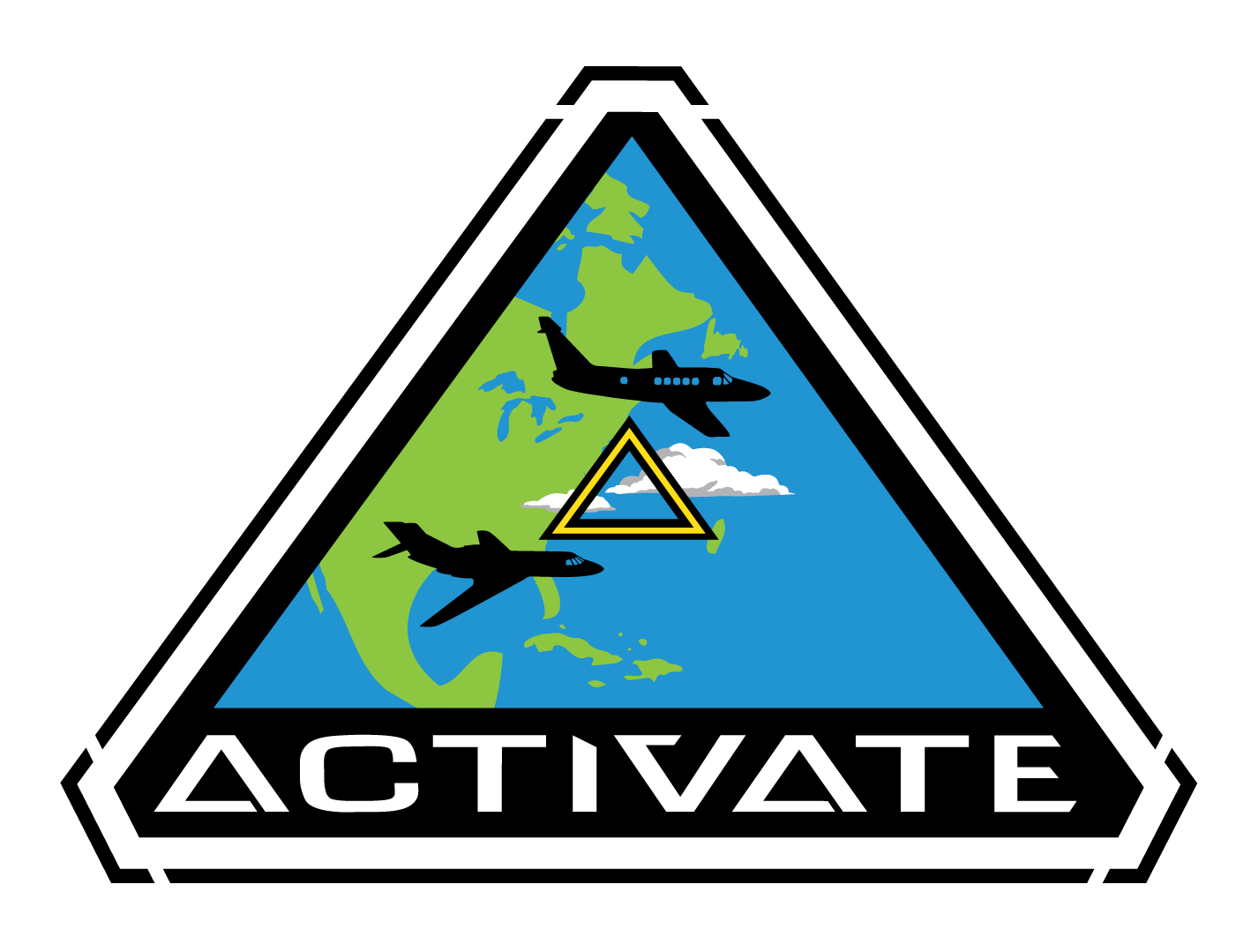
December 6, 2021
The 5th ACTIVATE deployment started this past week with two joint flights having similar headings going southeast from the base of operations at NASA Langley Research Center. These flights allowed for unique sampling of trace gases, aerosols, and marine boundary layer clouds in the month of December, which has yet to be done during ACTIVATE’s first 93 flights leading up to these two flights. More flights are planned in the coming week before a break and then resumption of flights in January.
July 1, 2021
We finished our summer campaign this past week with four more ACTIVATE flights (Research Flights 90-93) between June 28 and 30. These flights focused on extensive data collection in typical summertime shallow cumulus clouds. A notable feature in these flights was sampling behind ship vessels near the coast that yielded especially large enhancements in particle concentration parameters.
June 28, 2021
Four flights were conducted last week, with two single flight days on June 22 and 24, and a double flight day on June 26. Saturday’s conditions (June 26) were in particular very good for ACTIVATE with a scattered shallow cumulus cloud scene throughout the day that both planes were able to jointly characterize. The past week also was linked to high variability in aerosol conditions with the northward advancement of African dust into our study region.
June 21, 2021
This past week included three single-flight days on Tuesday-Thursday (June 15-17). The first flight of this week (June 15) was a statistical cloud survey but proved to be a challenging flight to execute as the King Air encountered pervasive cirrus along the track and the Falcon dealt with low clouds at varying altitude ranges. The June 16 flight targeted mostly clear skies with observations of moderate aerosol loading. This flight also included an overflight of Langley Research Center at the end to intercompare with the AERONET site and the High Altitude Lidar Observatory (HALO) HSRL/water vapor lidar that was conducting upward looking ground tests. The last flight of the week (June 17) included a coordinated run along the Advanced Spaceborne Thermal Emission and Reflection Radiometer (ASTER) satellite overpass and then two reverse headings to capture in cloud data in vicinity of the ASTER overpass for additional contextual data. The flights on June 16-17 both saw non-spherical particles near the coast and drizzle over the ocean was observed on June 17.
June 7, 2021
Four successful joint flights occurred last week. The double flight day on Wednesday June 2 was particularly noteworthy. Our morning flight conducted our typical statistical survey flight plan to an area south of the Virginia coast where there was a cumulus cloud field, with some regions evolving into deeper, more organized, convection. Based on that flight and satellite imagery, we set up the second flight to execute a “process study” pattern where the Falcon conducted a series of transects through a selected cloud cluster to characterize the vertical microphysical properties of the developing cluster immediately followed by an environmental profile in the surrounding cloud-free region. Simultaneously, the King Air conducted a “wheel and spoke” pattern centered around the cloud system, with multiple dropsondes launched above, and on the periphery of the cloud cluster alongside remote sensing transects to characterize the cloud and aerosol system underneath. Data from both planes will be used to characterize the range of cloud types observed on that day, with a focus on understanding the processes that drive shallow cumulus organization.
June 1, 2021
The last two weeks were busy with 9 joint flights, including three separate double-sortie days. The May 21 morning flight in particular was intriguing with a mixture of different conditions offshore with the two aircraft flying mostly straight to the east and then returning on the same track to NASA LaRC. Closer to shore, the aircraft observed a stratus deck with a prominent aerosol layer just above cloud as observed by the HSRL-2. These clouds then transitioned progressively into a more scattered cumulus cloud field to the east. At the far eastern end of the track there was a cold pool that we sampled within and just outside. Throughout this and the other flights this past week, there was evidence both either (or both) smoke and dust in the free troposphere. Measurement data will help unravel how these various aerosol types interact with the different types of clouds such as in the May 21 flights. On May 19, we also coordinated the flight along the CALIPSO satellite track where both aircraft and the satellite had successful made measurements.
May 17, 2021
After a short break after the Winter 2021 campaign, ACTIVATE took back to the skies this past week to start the Summer 2021 campaign. We conducted 4 successful joint flights between May 13-15 with interesting cloud conditions in each flight. The lower-flying Falcon characterized multiple layers of clouds and observed both warm and mixed-phase precipitation. Remote sensing observations on the higher-flying King Air detected aerosol layers aloft in the free troposphere potentially from dust and smoke on separate flights.
April 5, 2021
ACTIVATE wrapped up its winter 2021 flight campaign with five joint research flights this past week (RF 57-61) capped off by a double-flight day on Friday (4/2) to capitalize on another cold air outbreak event. Those two flights included an increased number of dropsondes (~10 per flight) to get extensive temporal and spatial characterization of the vertical atmospheric structure as the cold air outbreak cloud field evolved during the day. Notable in the other flights last week was successful coordination with ASTER and CALIPSO overpasses in our flight region.
March 29, 2021
We executed a joint flight (RF 56) on Tuesday March 23rd on a day marked by fairly ‘clean’ conditions in terms of very low aerosol and cloud drop number concentrations in the marine boundary layer. Cloud fraction on this day was markedly lower than a typical cold air outbreak type of day, which is helpful for ACTIVATE which is aiming to generate statistics in a wide range of conditions associated with aerosols, clouds, and meteorology.
March 22, 2021
The previous week posed significant weather challenges but Saturday (March 20, 2020) did finally provide low clouds evolving in a cold air outbreak. Interesting features in that joint flight (Research Flight 55) were Asian dust residing aloft above the boundary layer clouds, in addition to an interesting layer of depolarizing aerosol right above clouds near the end of flight as observed by the HSRL-2; it is unclear what the source of that layer was, but data analysis with the Falcon data will help unravel those details.
March 8, 2021
ACTIVATE executed three successful joint flights (Research Flights 48-50) this past week. On Thursday March 4th we coordinated our flight with a NASA A-Train overpass over an area with some scattered marine boundary layer clouds. The back-to-back flights on Friday March 5th served two objectives to capitalize on an excellent cold air outbreak event: (i) characterize the aerosol and meteorological characteristics upwind of the cloud field farther downwind; and (ii) characterize the evolution of the cloud field with the desire to capture the transition from overcast cloudy conditions to open cell structure. Noteworthy features in these flights were dust layers from long-range transport and significant new particle formation.

Suggested Searches
- Climate Change
- Expedition 64
- Mars perseverance
- SpaceX Crew-2
- International Space Station
- View All Topics A-Z
Humans in Space
Earth & climate, the solar system, the universe, aeronautics, learning resources, news & events.

2024 Total Solar Eclipse Broadcast

Eclipses Near and Far

Scientists Pursue the Total Solar Eclipse with NASA Jet Planes
- Search All NASA Missions
- A to Z List of Missions
- Upcoming Launches and Landings
- Spaceships and Rockets
- Communicating with Missions
- James Webb Space Telescope
- Hubble Space Telescope
- Why Go to Space
- Astronauts Home
- Commercial Space
- Destinations
- Living in Space
- Explore Earth Science
- Earth, Our Planet
- Earth Science in Action
- Earth Multimedia
- Earth Science Researchers
- Pluto & Dwarf Planets
- Asteroids, Comets & Meteors
- The Kuiper Belt
- The Oort Cloud
- Skywatching
- The Search for Life in the Universe
- Black Holes
- The Big Bang
- Dark Energy & Dark Matter
- Earth Science
- Planetary Science
- Astrophysics & Space Science
- The Sun & Heliophysics
- Biological & Physical Sciences
- Lunar Science
- Citizen Science
- Astromaterials
- Aeronautics Research
- Human Space Travel Research
- Science in the Air
- NASA Aircraft
- Flight Innovation
- Supersonic Flight
- Air Traffic Solutions
- Green Aviation Tech
- Drones & You
- Technology Transfer & Spinoffs
- Space Travel Technology
- Technology Living in Space
- Manufacturing and Materials
- Science Instruments
- For Kids and Students
- For Educators
- For Colleges and Universities
- For Professionals
- Science for Everyone
- Requests for Exhibits, Artifacts, or Speakers
- STEM Engagement at NASA
- NASA's Impacts
- Centers and Facilities
- Directorates
- Organizations
- People of NASA
- Internships
- Our History
- Doing Business with NASA
- Get Involved
- Aeronáutica
- Ciencias Terrestres
- Sistema Solar
- All NASA News
- Video Series on NASA+
- Newsletters
- Social Media
- Media Resources
- Upcoming Launches & Landings
- Virtual Events
- Sounds and Ringtones
- Interactives
- STEM Multimedia

Expedition 71

NASA’s LRO Finds Photo Op as It Zips Past SKorea’s Danuri Moon Orbiter

Hubble Peers at Pair of Closely Interacting Galaxies

NASA Astronaut Loral O’Hara, Expedition 70 Science Highlights

Diez maneras en que los estudiantes pueden prepararse para ser astronautas

Optical Fiber Production

How NASA Spotted El Niño Changing the Saltiness of Coastal Waters

Earth Day Toolkit

Veronica T. Pinnick Put NASA’s PACE Mission through Its Paces

NASA’s NEOWISE Extends Legacy With Decade of Near-Earth Object Data

Harnessing the 2024 Eclipse for Ionospheric Discovery with HamSCI

How NASA’s Roman Telescope Will Measure Ages of Stars

NASA’s Webb Probes an Extreme Starburst Galaxy

Amendment 8 A.44 Earth Action: Health and Air Quality Applied Sciences Team Final Text and Due Dates.

Introduction to Spectrum

NASA Langley Team to Study Weather During Eclipse Using Uncrewed Vehicles

NASA Noise Prediction Tool Supports Users in Air Taxi Industry

ARMD Solicitations

Tech Today: Synthetic DNA Diagnoses COVID, Cancer

David Woerner

Tech Today: Cutting the Knee Surgery Cord

NASA Partnerships Bring 2024 Total Solar Eclipse to Everyone

NASA, Salisbury U. Enact Agreement for Workforce Development

NASA Wallops to Launch Three Sounding Rockets During Solar Eclipse

Astronauta de la NASA Marcos Berríos

Resultados científicos revolucionarios en la estación espacial de 2023
Nasa langley’s virtual tour.

Look inside the gates of NASA’s Langley Research Center by taking our Virtual Tour .
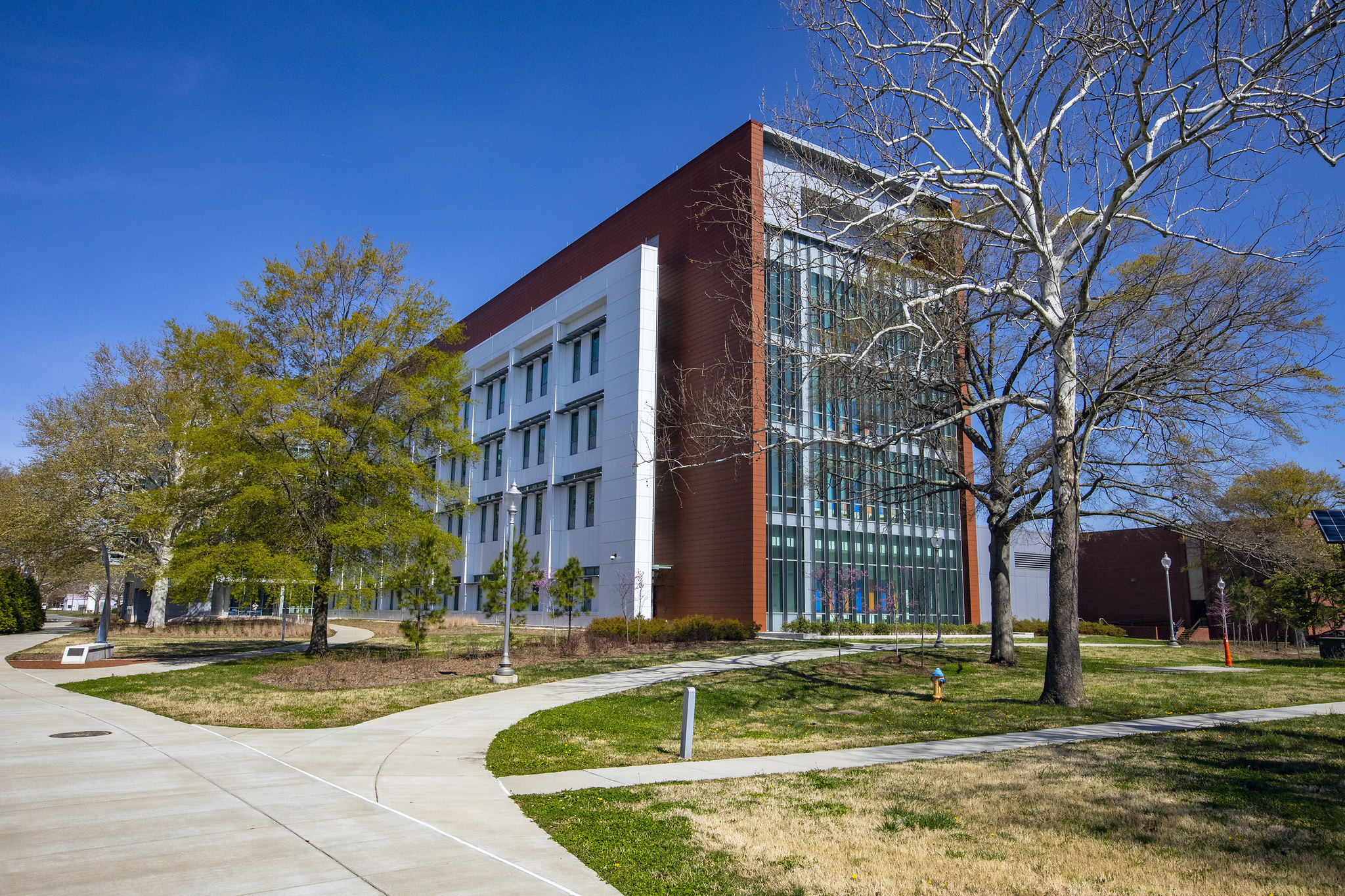

IMAGES
COMMENTS
Langley is a NASA center in Hampton, Virginia, that conducts research and development for aviation, Earth science, and space exploration. Learn about its history, missions, directorates, news, and achievements.
The Langley Research Center (LaRC or NASA Langley), located in Hampton, Virginia near the Chesapeake Bay front of Langley Air Force Base, is the oldest of NASA's field centers. LaRC has focused primarily on aeronautical research but has also tested space hardware such as the Apollo Lunar Module. In addition, many of the earliest high-profile ...
Langley Research Center is the original field center of NASA, located in Hampton, Virginia. It conducts research and testing for aviation, Earth's atmosphere, and space exploration, including water impact testing for Orion spacecraft.
The Langley research lab is located in Hampton, Virginia, only a few miles from Virginia Beach. Its Air & Space Center serves as the official visitors center, and contains a wealth of aircraft and ...
NASA Langley - 100 Years: Something happened 100 years ago that changed forever the way we fly, the way we explore space and how we study our home planet. That something was the establishment of what is now NASA's Langley Research Center in Hampton, Virginia, which commemorates its 100th anniversary on July 17, 2017.
LandIR is a national historical landmark and a unique venue for full-scale crash and impact tests on land and water. It was built for the Apollo program and has been modified for various space exploration research testing, including Orion Crew Exploration Vehicle and Mars sample return capsule.
Learn about the history, mission, and achievements of NASA Langley Research Center, the original field center of the Agency, and its role in driving advances in science, technology, and exploration. Visit the Virginia Air & Space Science Center, one of 14 NASA Visitor Centers and Orbiter Locations nationwide, to explore the world of air and space.
Langley, founded in 1917, is the nation's first civilian aeronautical research facility and NASA's oldest field center. Langley was the first federal facility to achieve the Occupational Safety and Health Administration's (OSHA) Voluntary Protection Programs Star status in 1998, and was re-certified in 2002, 2007 and 2012.
Explore the history and future of aviation and space at the official visitor center for NASA Langley Research Center. See interactive exhibits, historic aircrafts, IMAX films, and more at this Hampton, VA attraction.
The National Aeronautics and Space Administration. NASA explores the unknown in air and space, innovates for the benefit of humanity, and inspires the world through discovery. Join Us.
Current Opportunities - NASA Langley Research Center. You can make a difference in the future for all humanity. Click on the link (s) below to access current job openings or internship opportunities within the Research Directorate at NASA's Langley Research Center in Hampton, VA. See all current open positions on USA Jobs.
NASA's Langley Research Center cordially invites the public to see where aerospace history was made and where the triumphs of tomorrow are taking shape now. Join us for this special day to gain a glimpse of the unique and exciting work taking place at NASA's Langley Research Center. Saturday, October 21st from 9 a.m. to 4 p.m.
In September 2017, NASA Langley Research Center dedicated the Katherine Johnson Computational Research Facility. The building consolidated four Langley data centers and was named after Johnson for ...
Aeronautics at Ames Research Center Fall 2024 018368. 2. Agile Business Analyst for NASA STEM Gateway 018370. 3. CALPHAD applied to in-space laser manufacturing 017840 ... 37. Archives Intern - Langley Research Center (in-person) 018060. 38. Characterization of high strain composite materials and structures 018183. 39. Communications Support ...
Research Objectives and Conceptual Design of the NASA RVLT Project Tiltwing Validation Test. NTRS NTRS - NASA Technical Reports Server. Search. ... Siena K S Whiteside (Langley Research Center Hampton, United States) Brandon L Litherland (Langley Research Center Hampton, United States) Date Acquired. March 7, 2024 . Subject Category.
A six-person team of researchers from NASA's Langley Research Center in Hampton, Virginia, will travel to Fort Drum, N.Y., to study changes in the Sun's radiation as it reaches Earth before, during, and after the total solar eclipse April 8.
Four graduate students from the University of Arizona visited Langley Research Center to learn about and participate in the operational side of ACTIVATE. They took part in a very active flight week, with a total of eight joint flights deployed (Flights 153 - 160). Flights 156 and 157 on Wednesday, May 18th were special because these were the ...
Look inside the gates of NASA's Langley Research Center by taking our Virtual Tour. The Measurement Systems Laboratory at NASA Langley. NASA. The National Aeronautics and Space Administration. NASA explores the unknown in air and space, innovates for the benefit of humanity, and inspires the world through discovery.